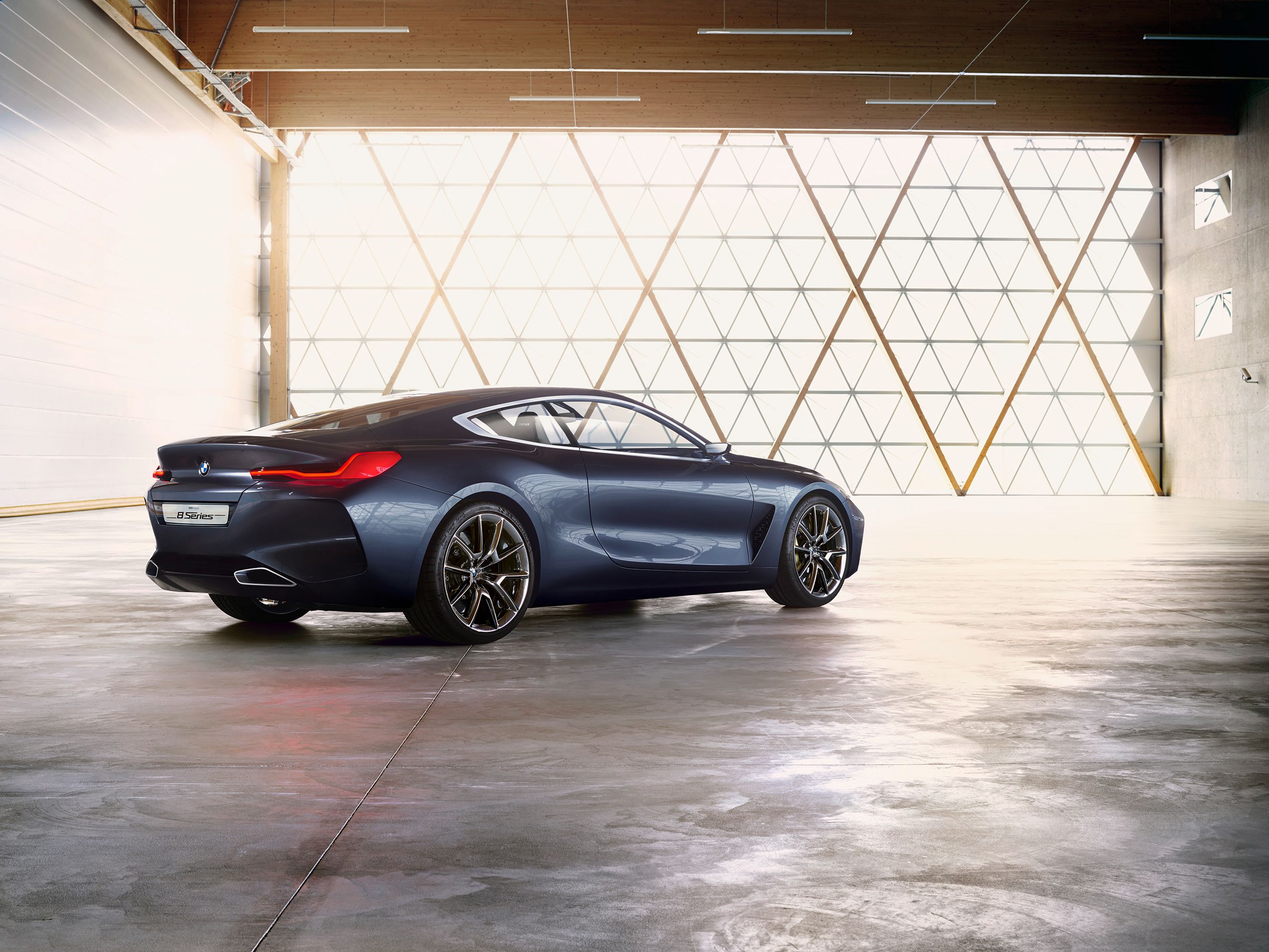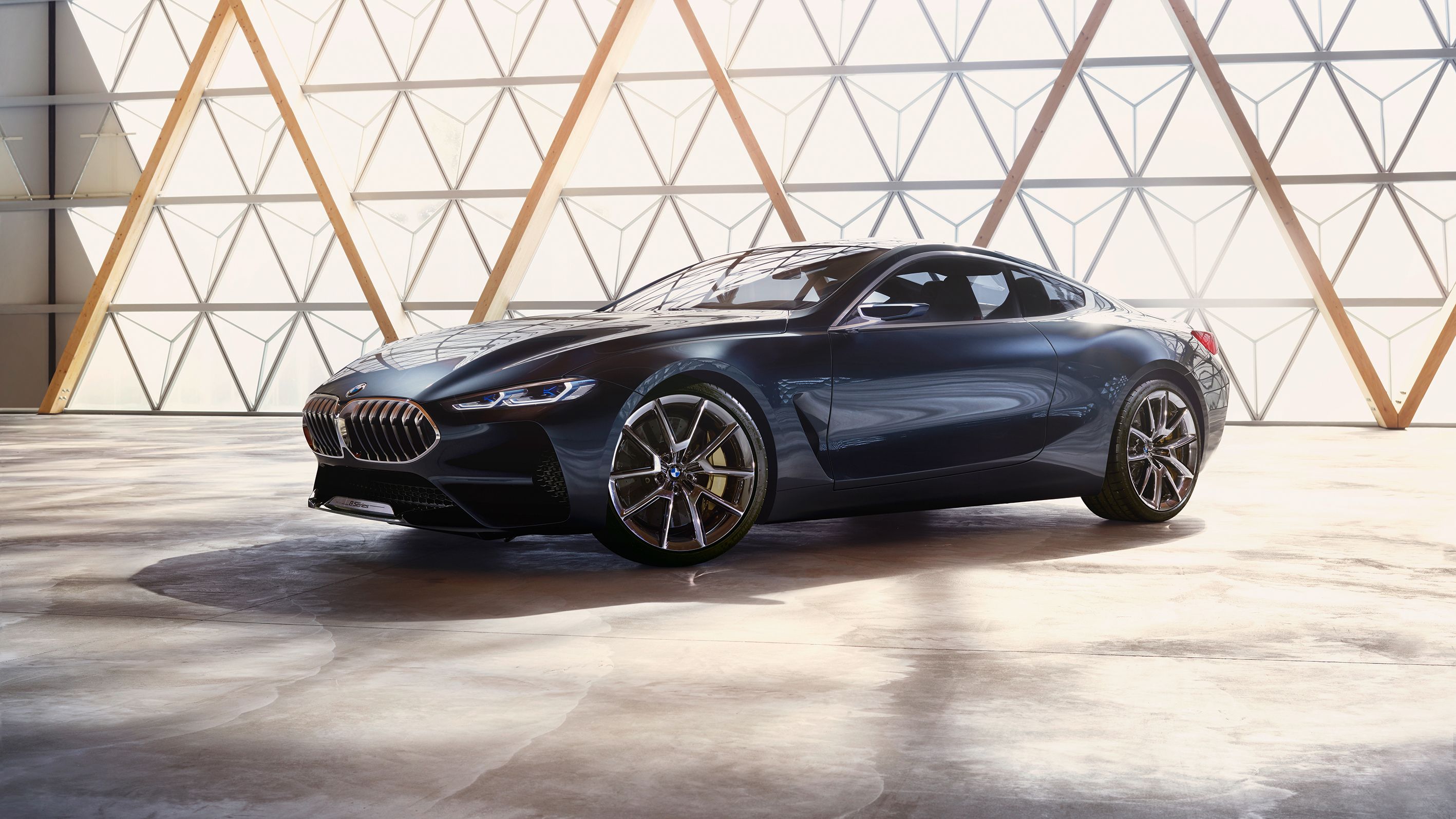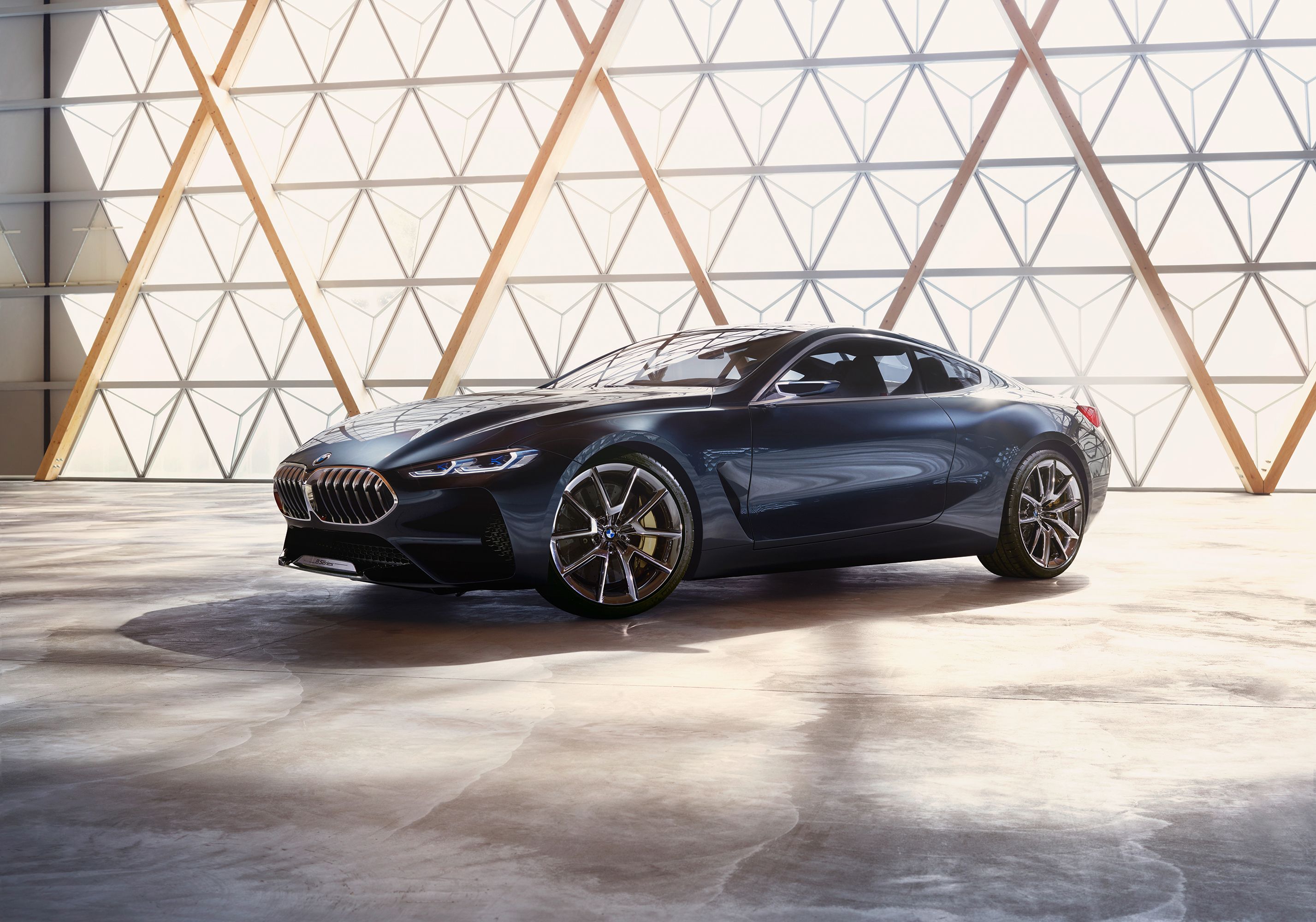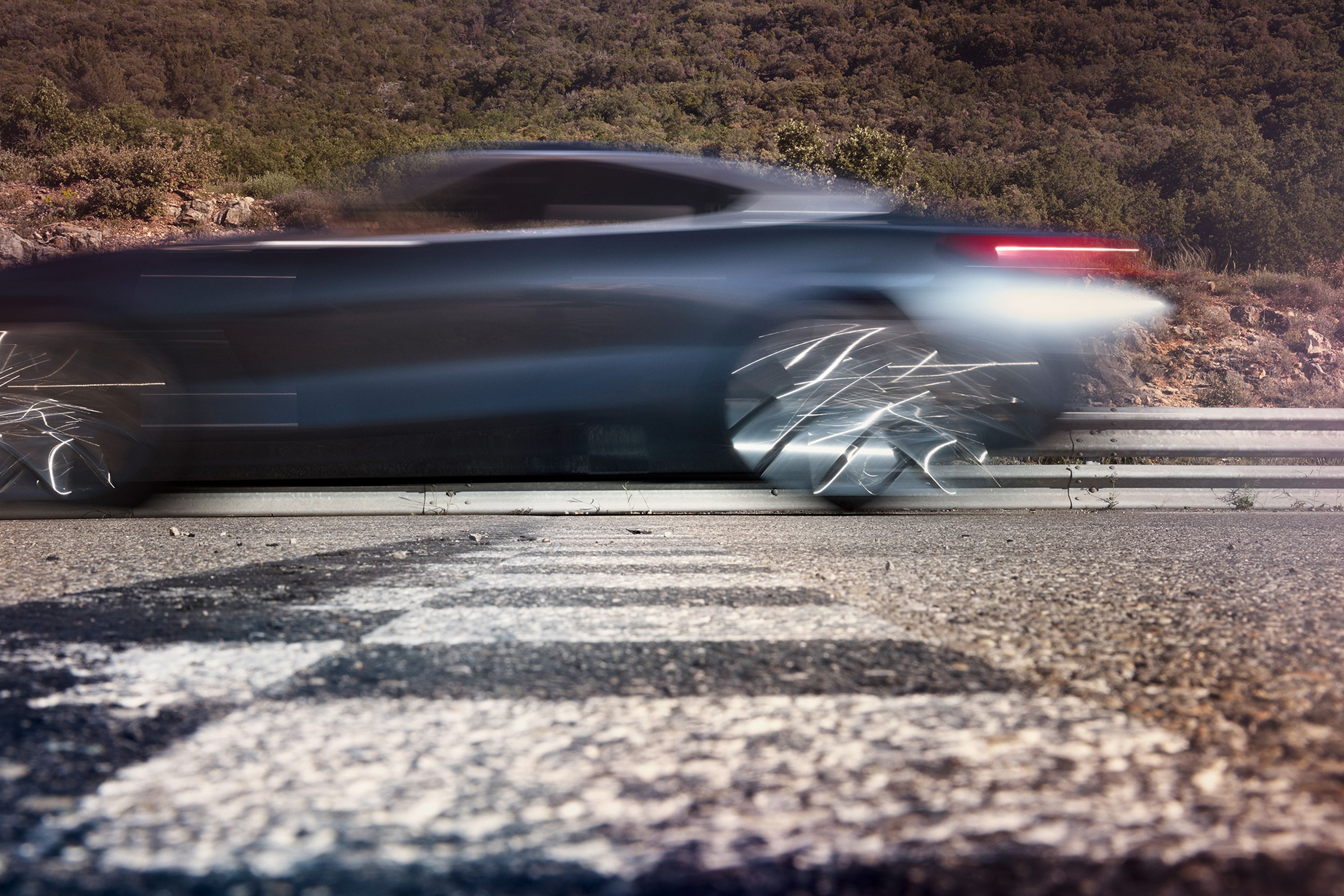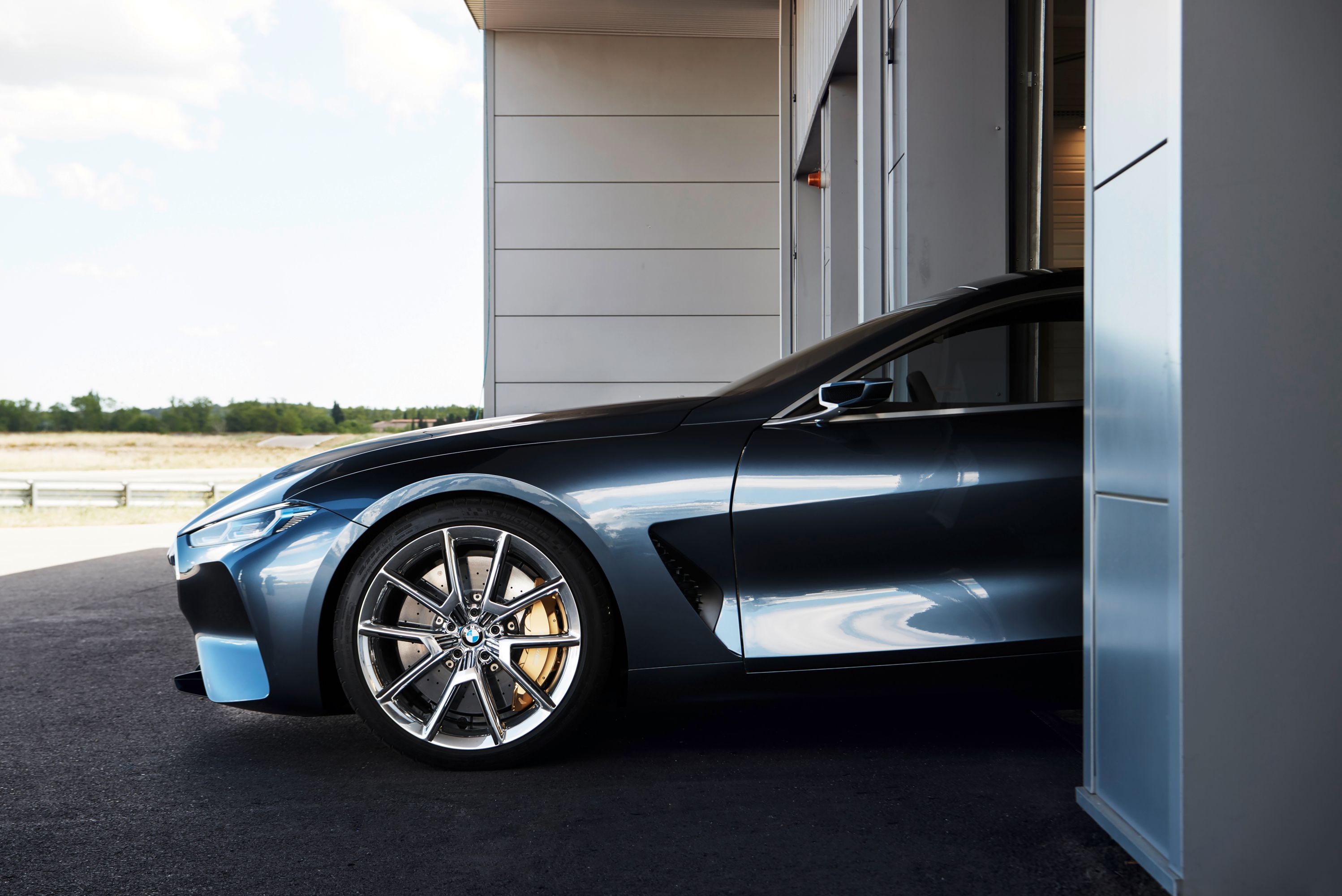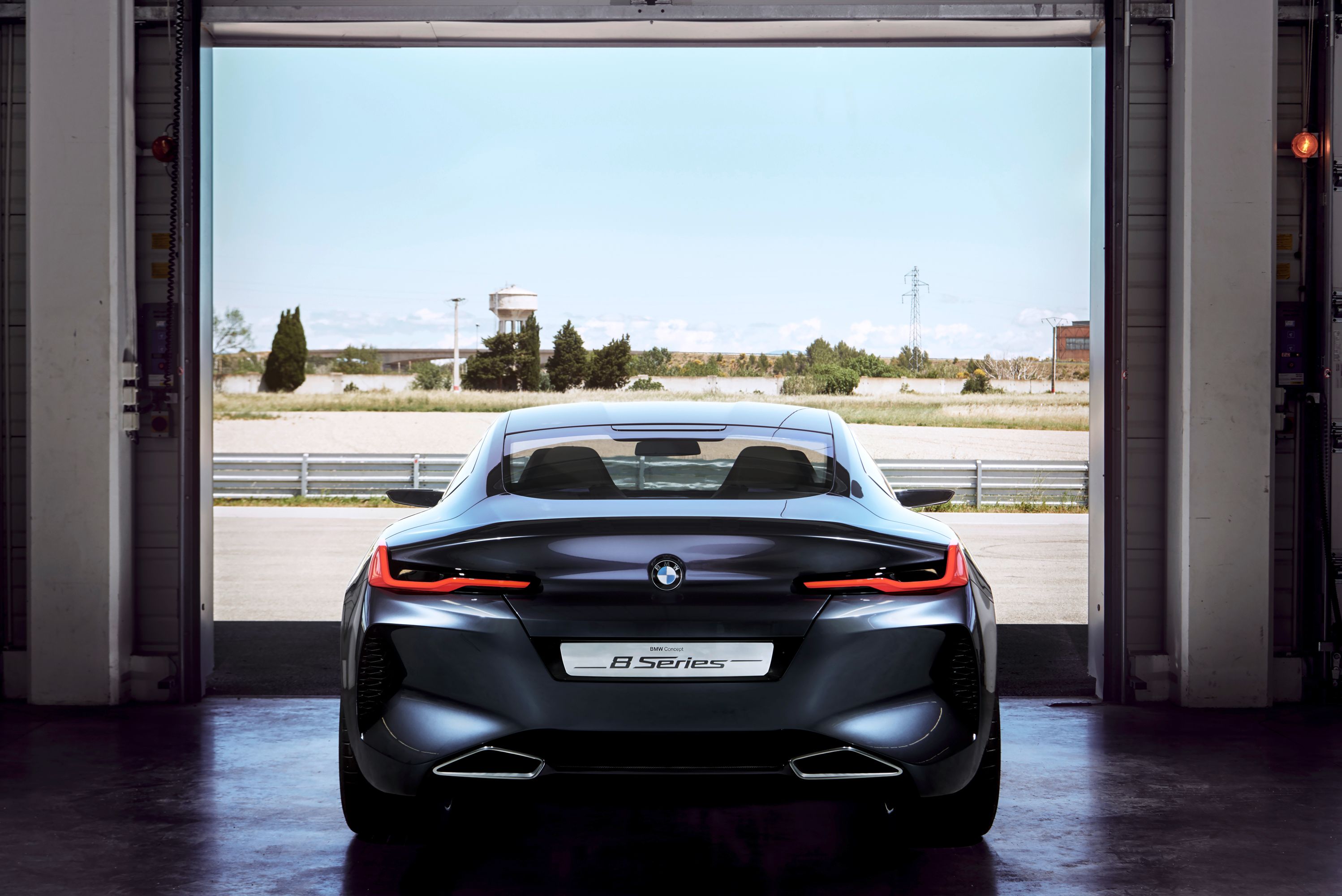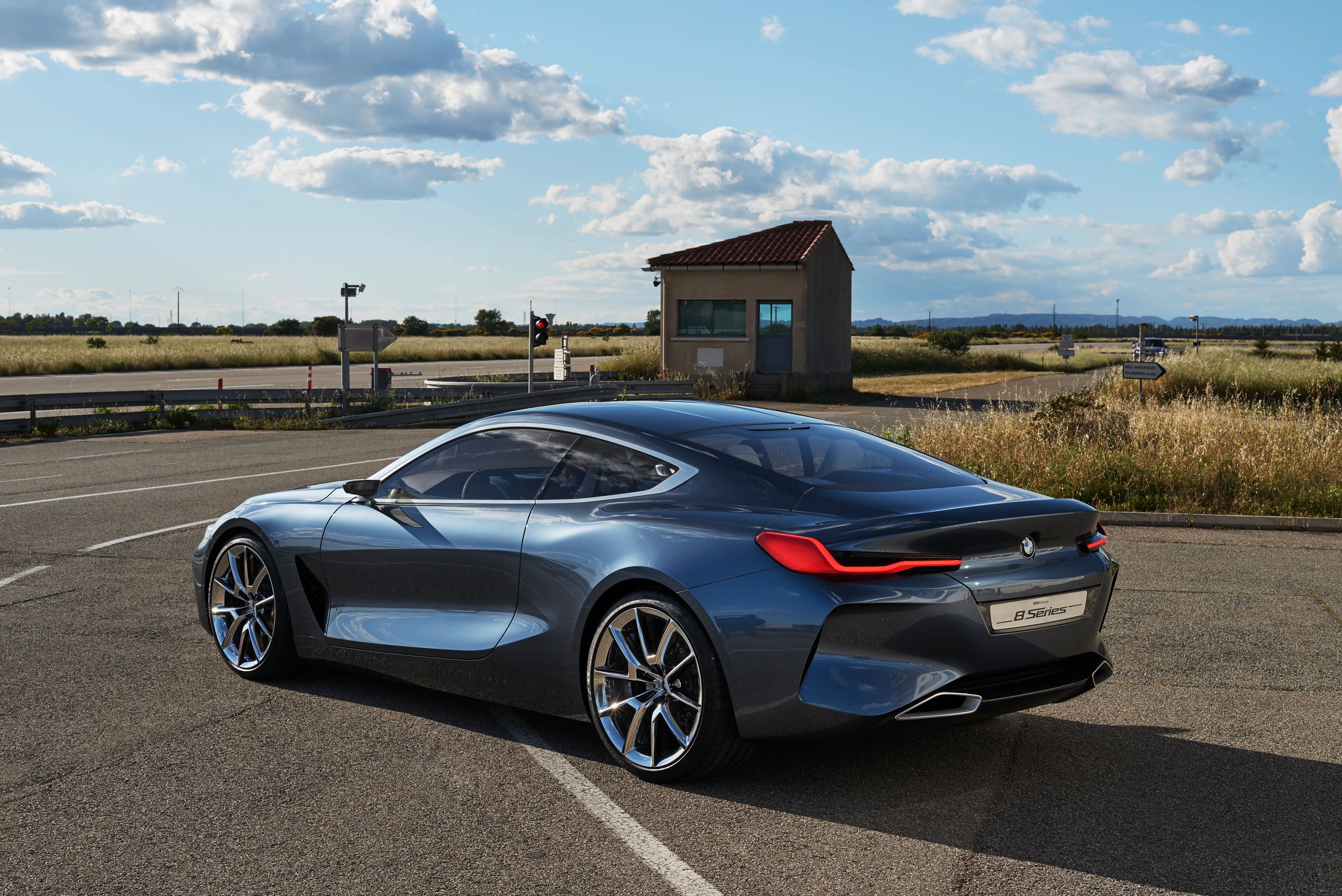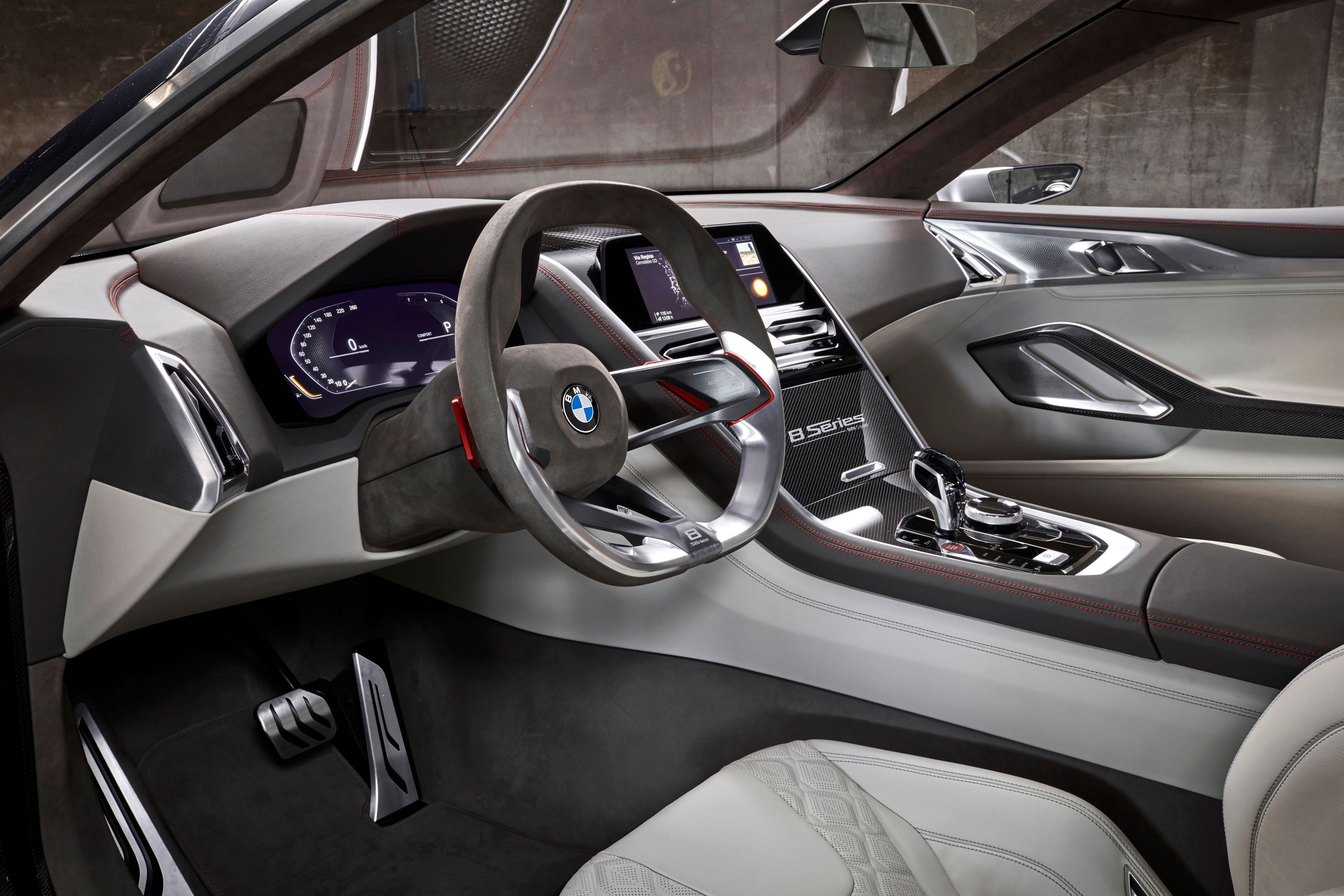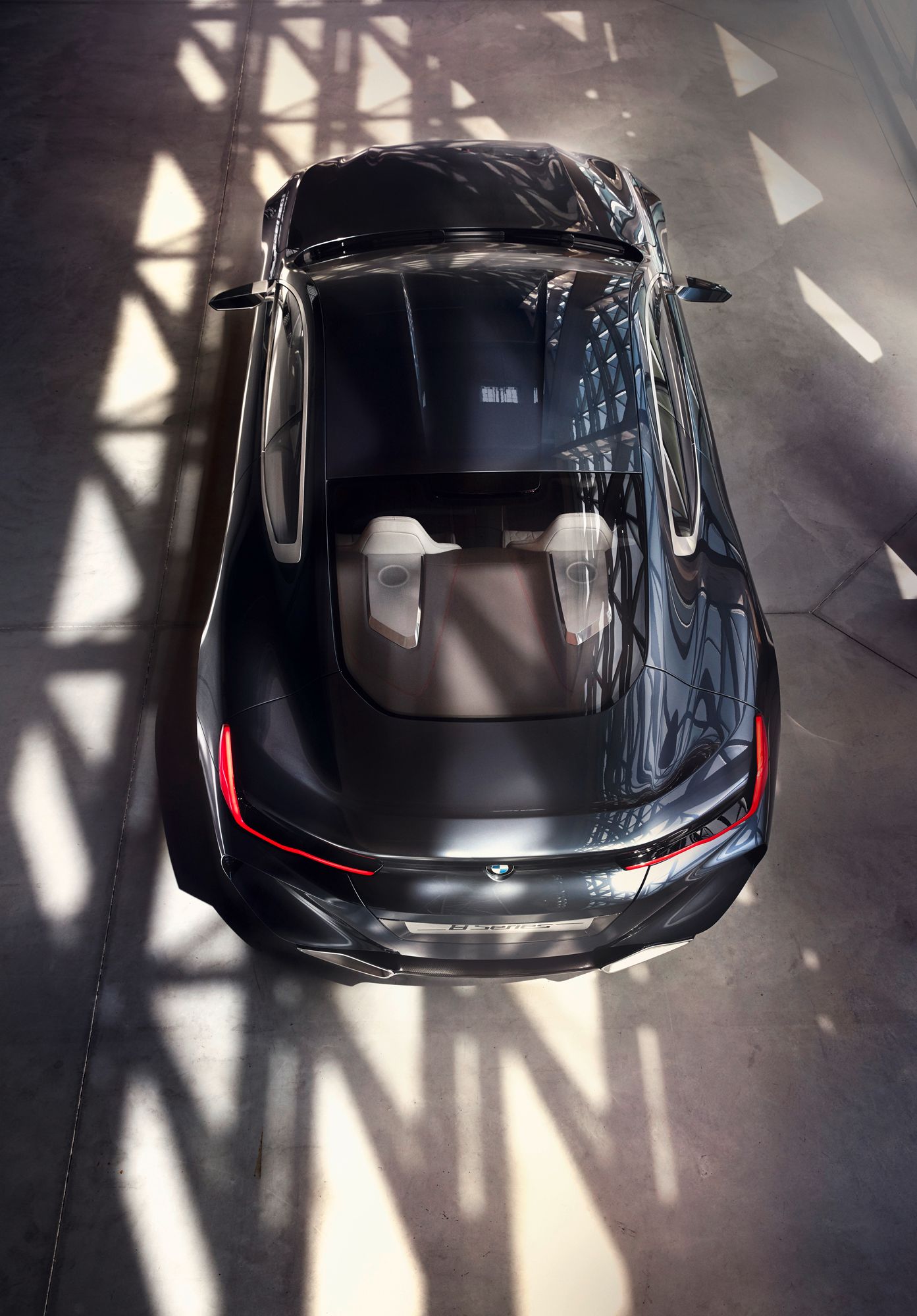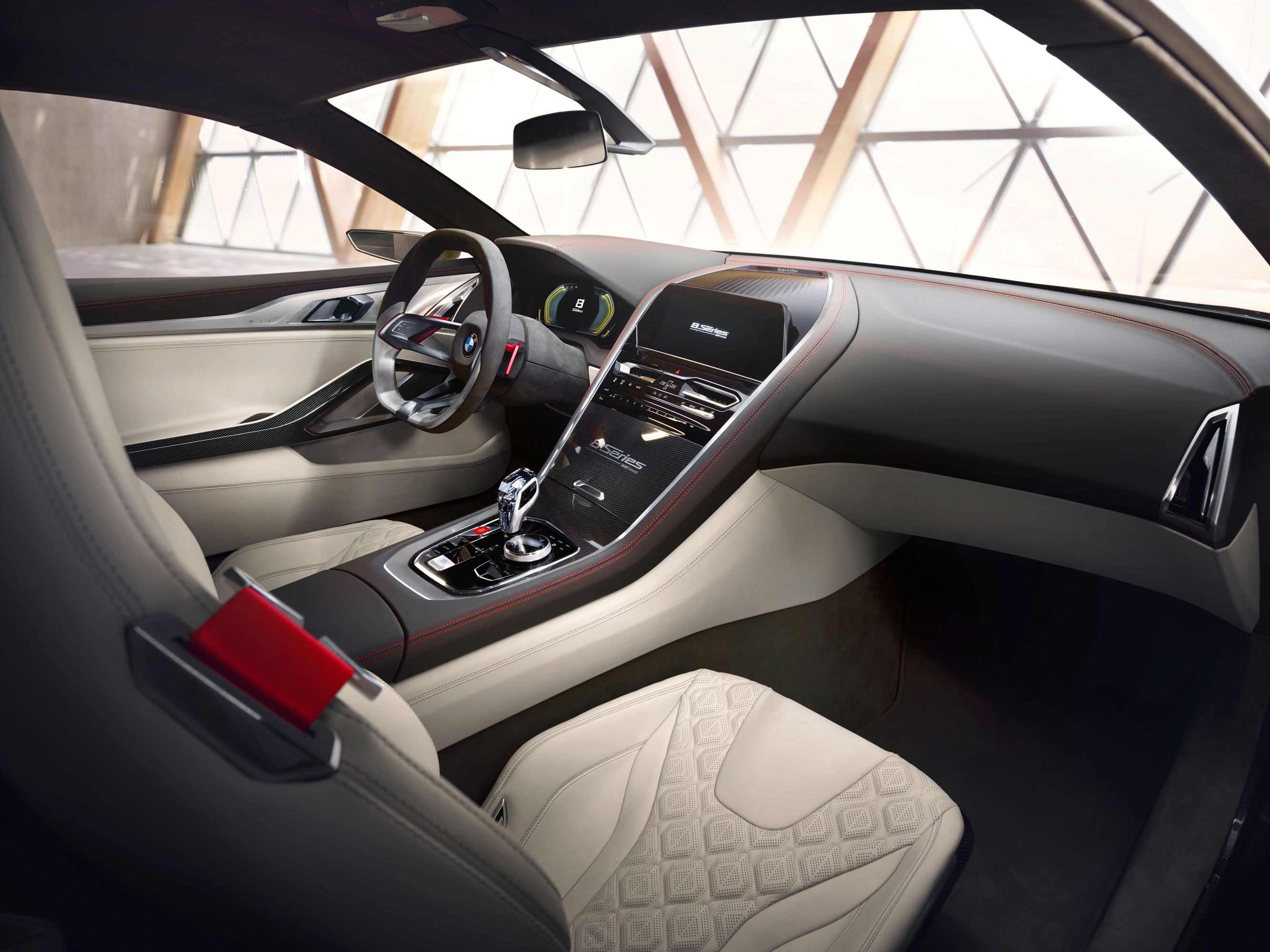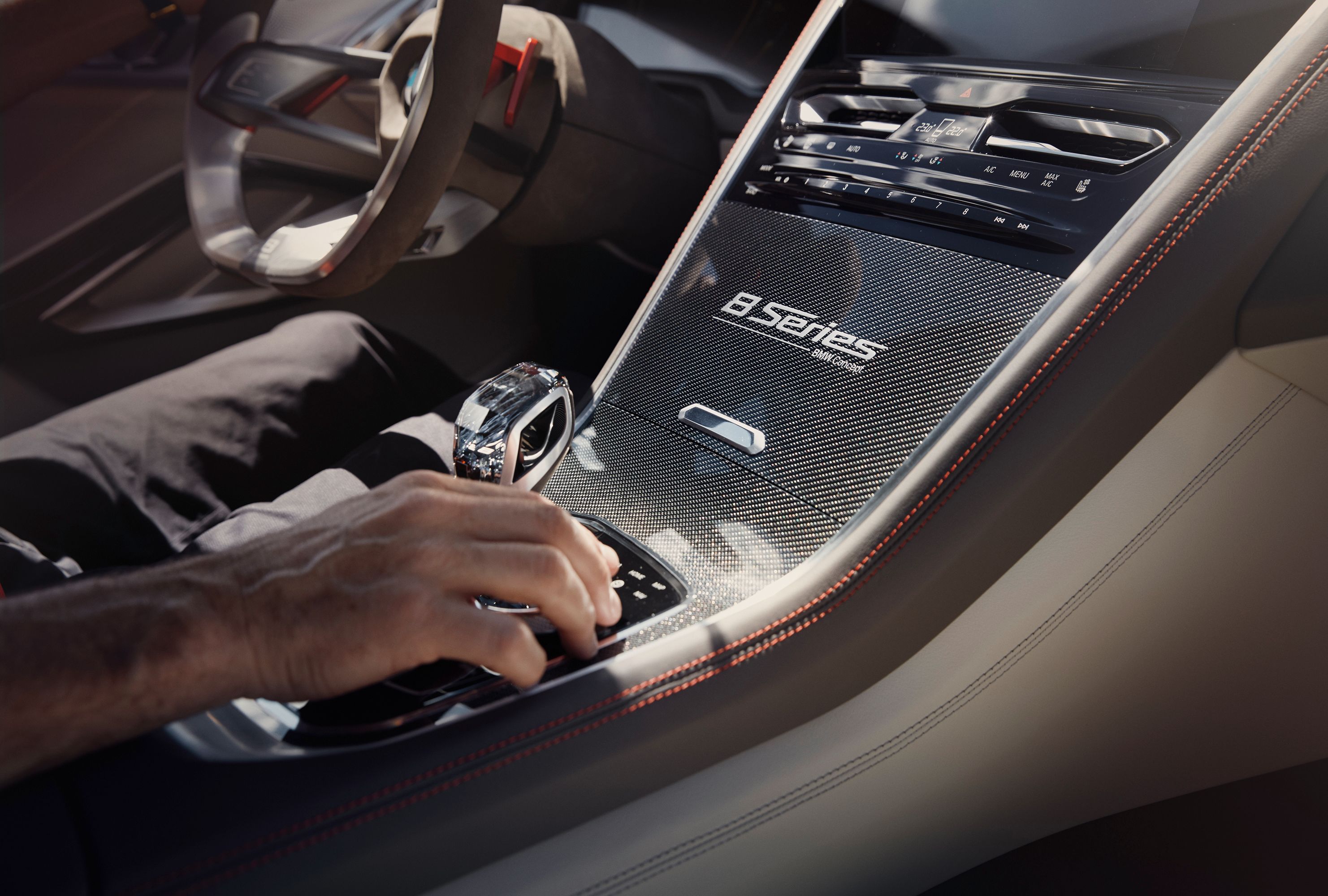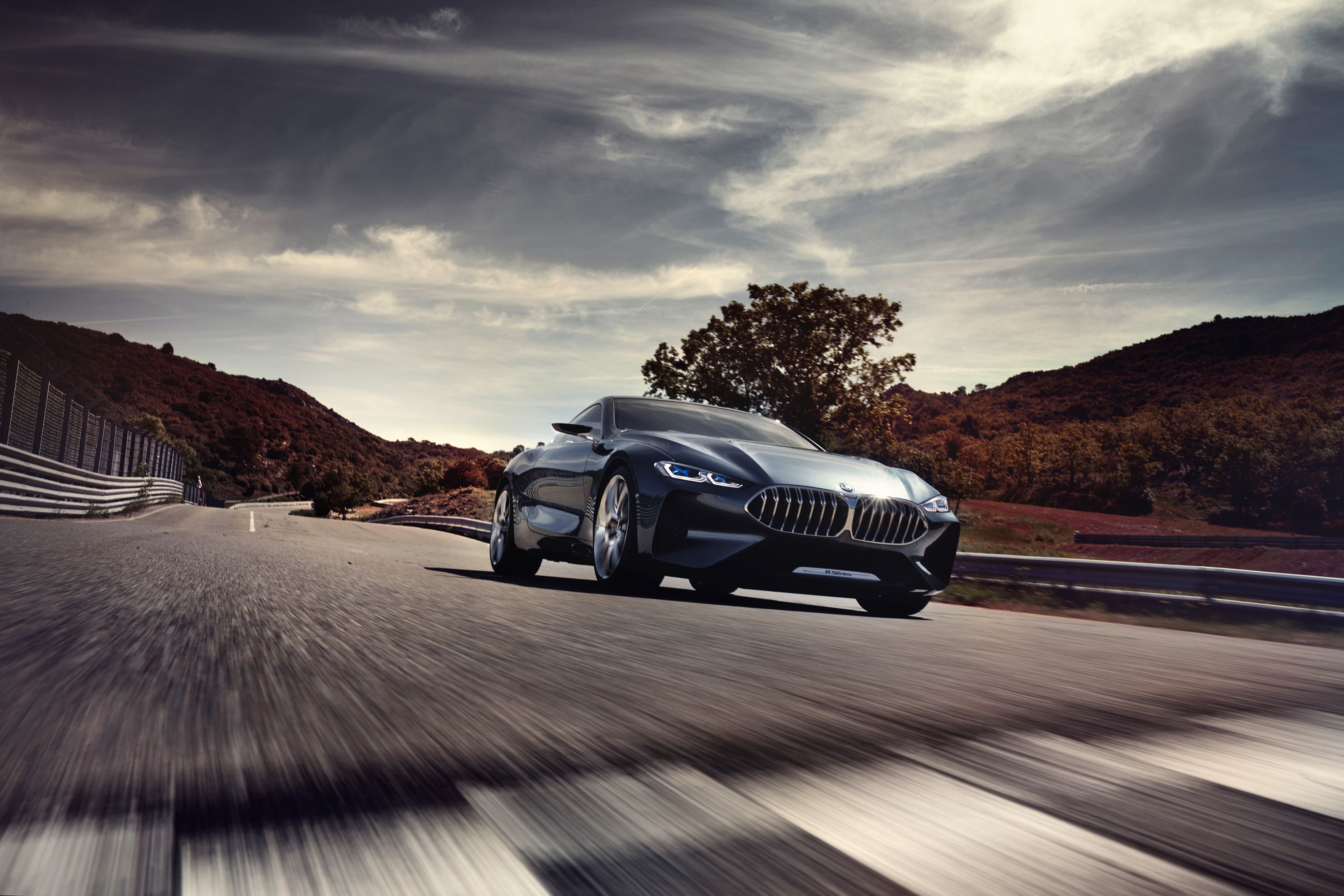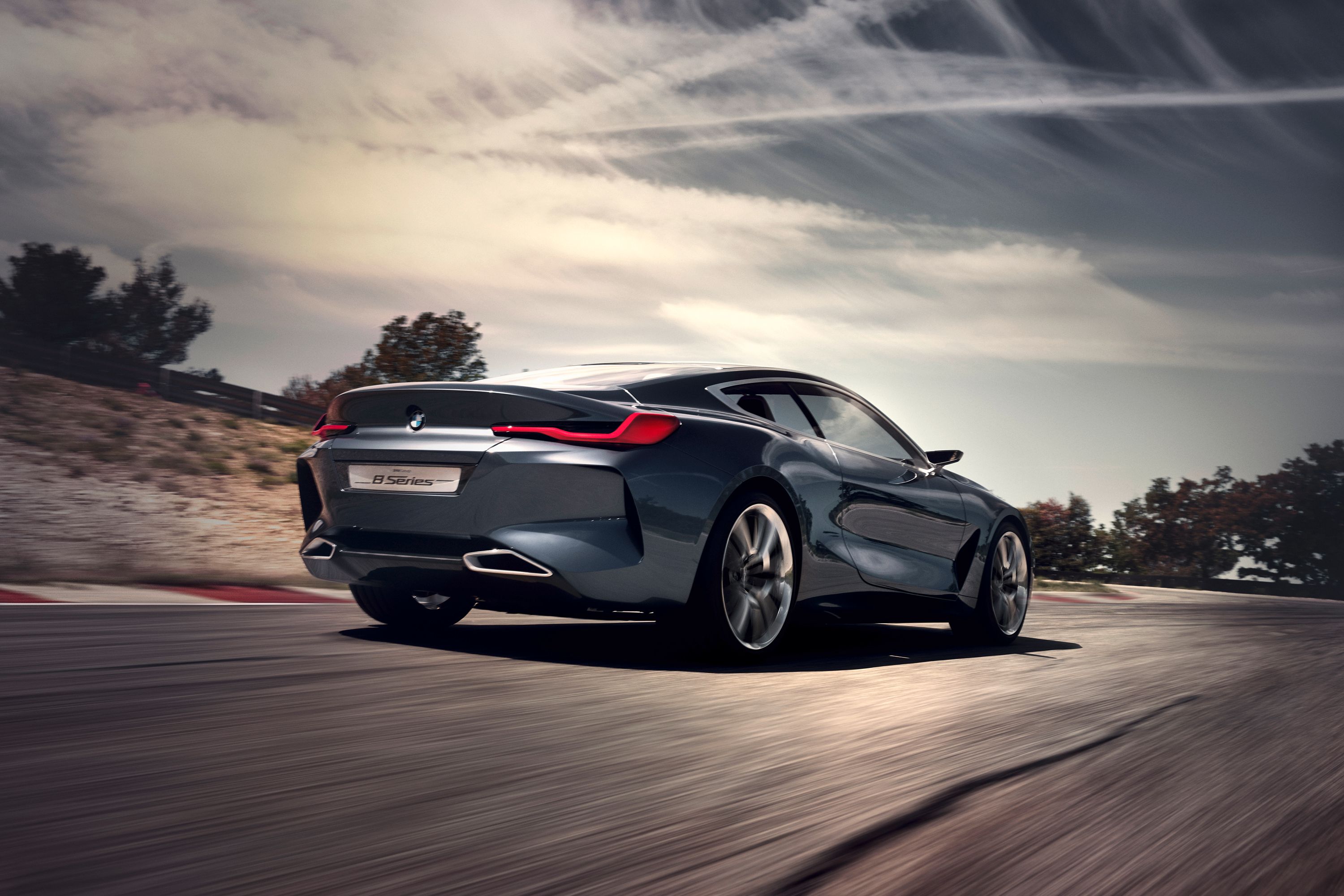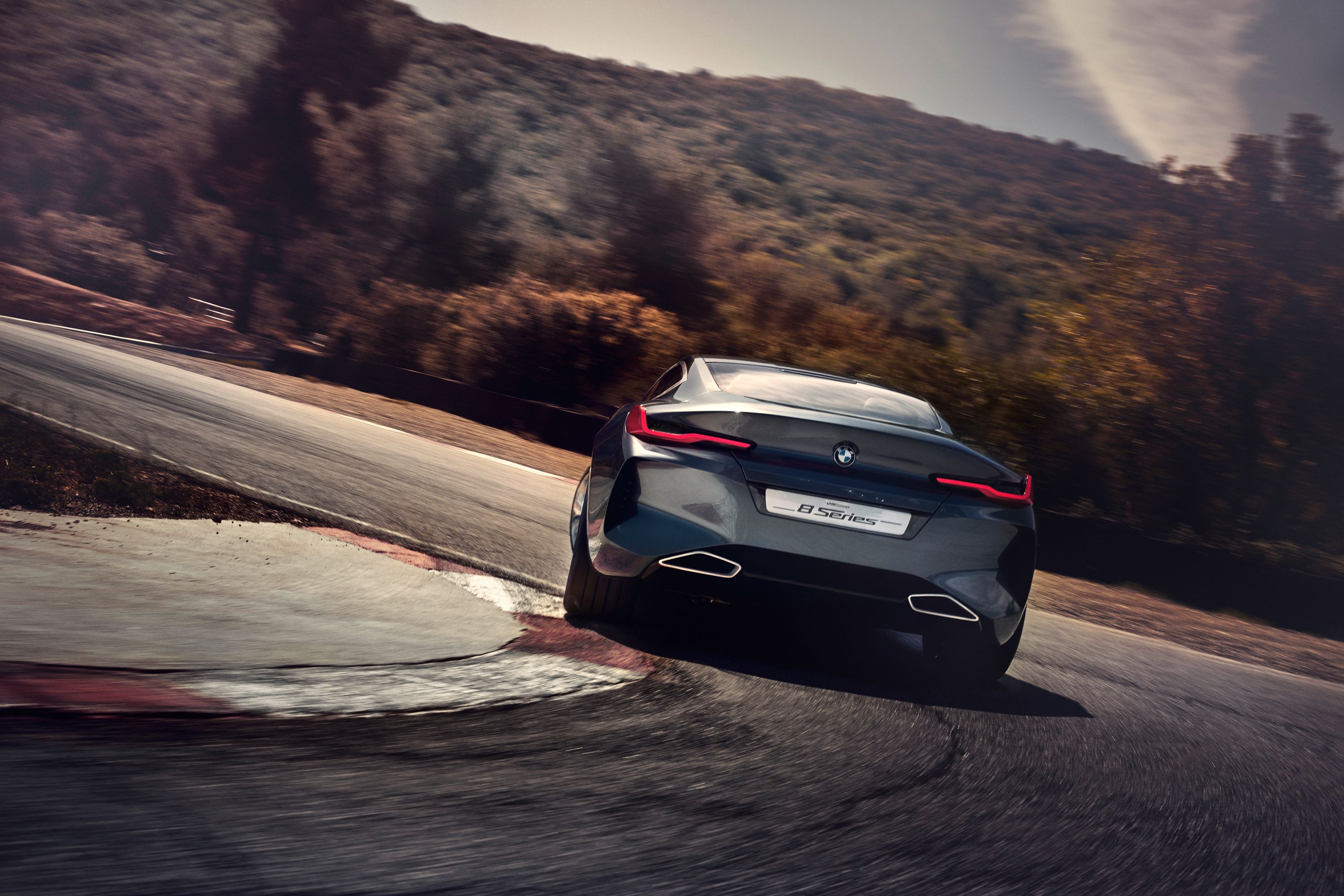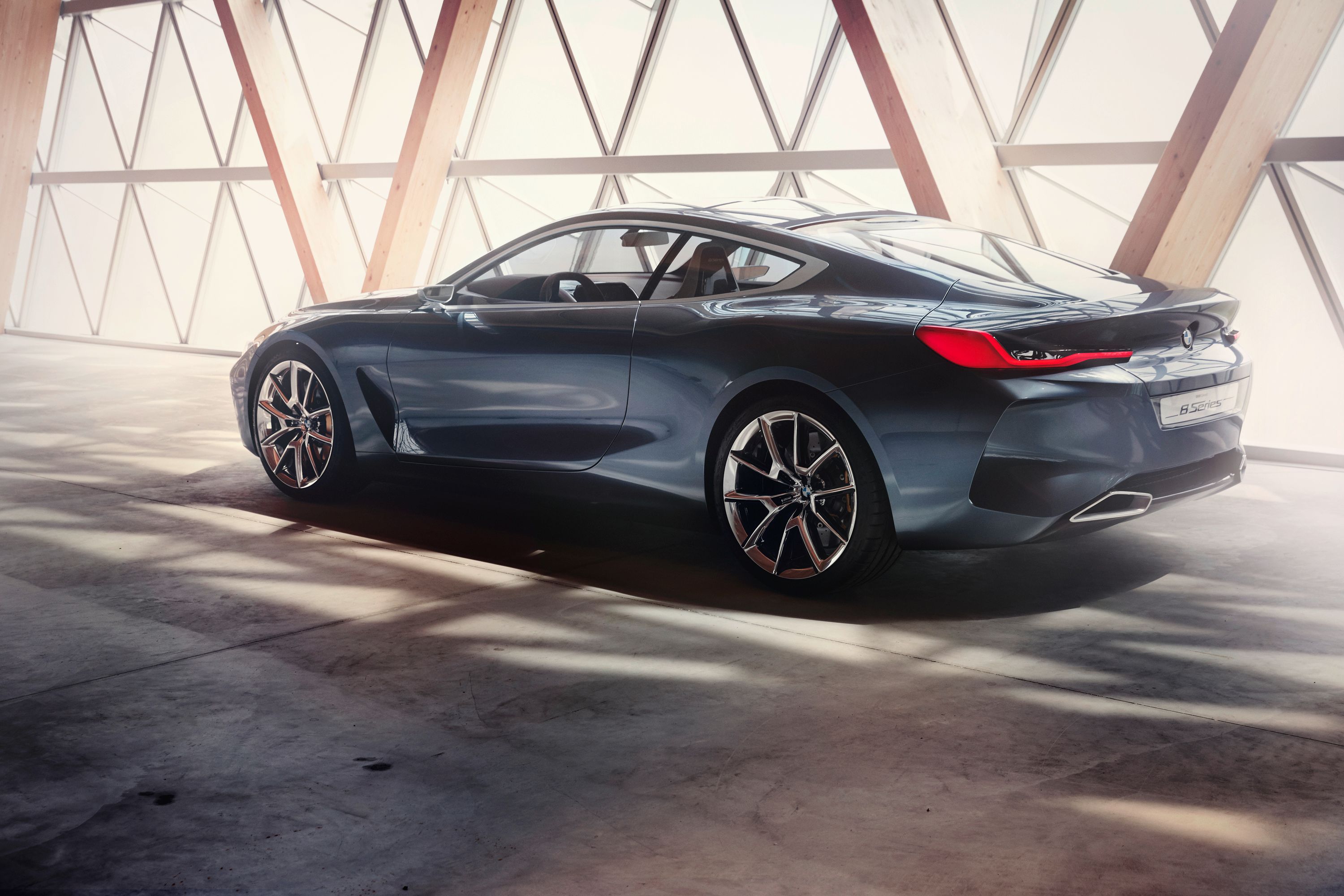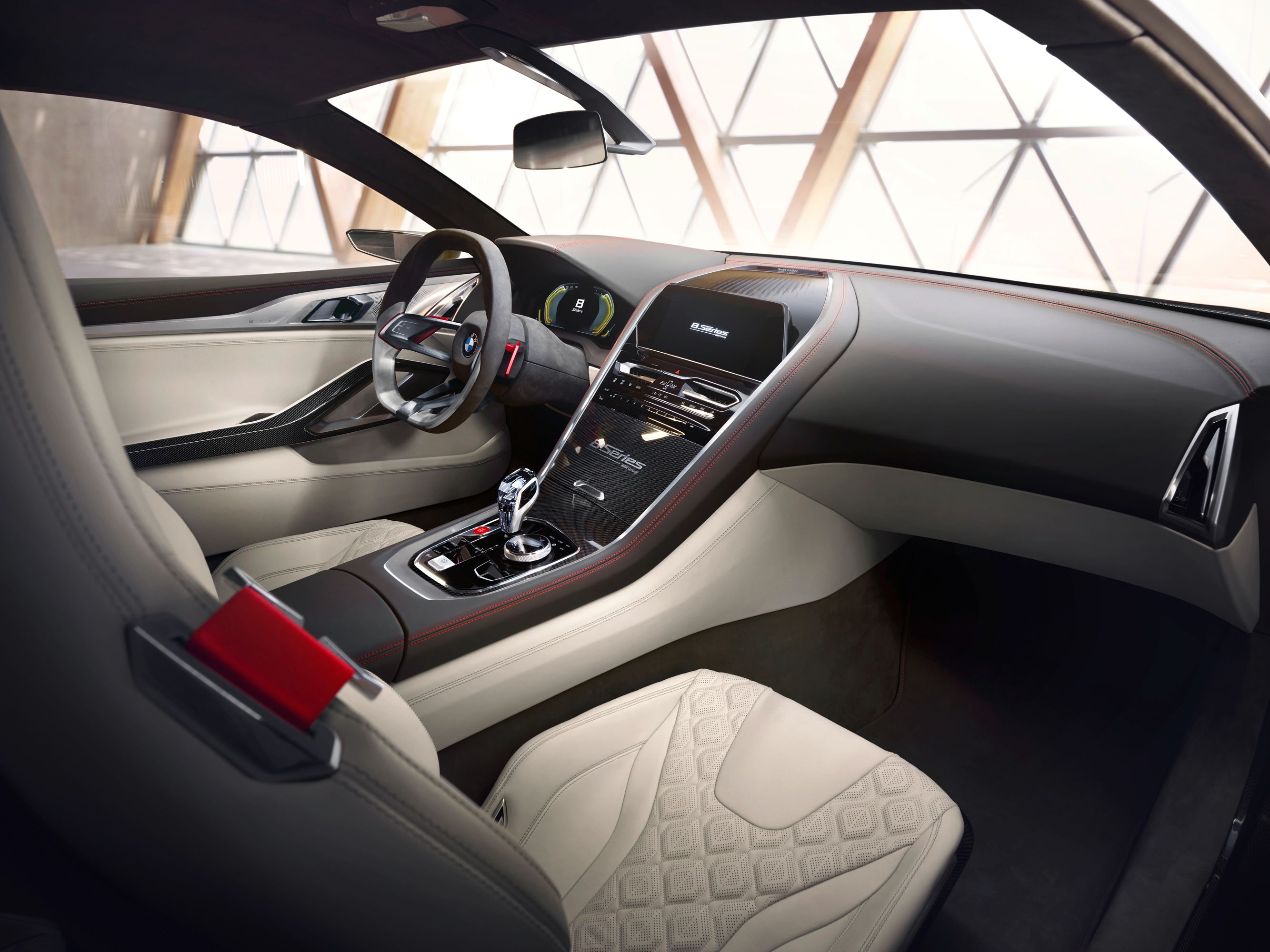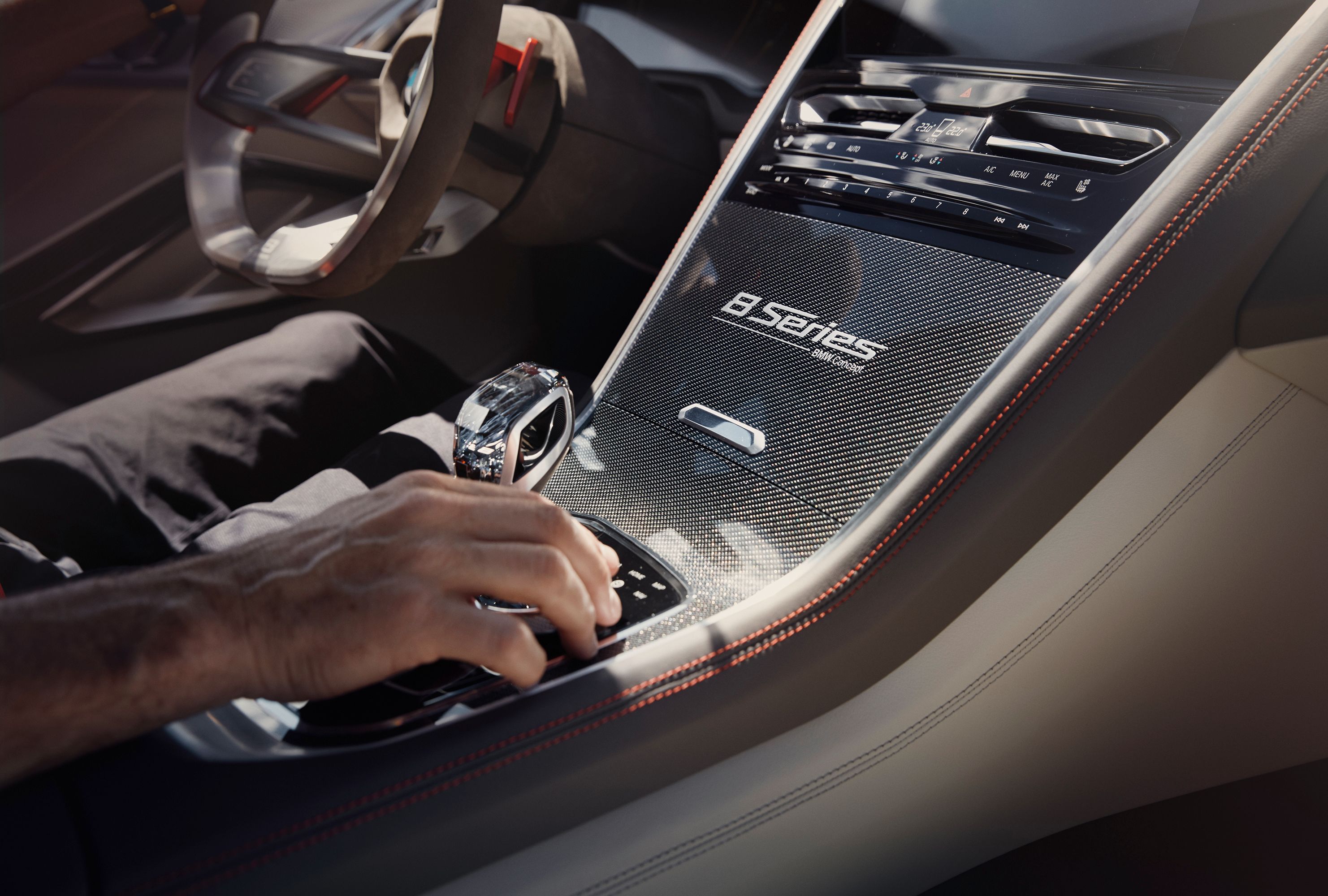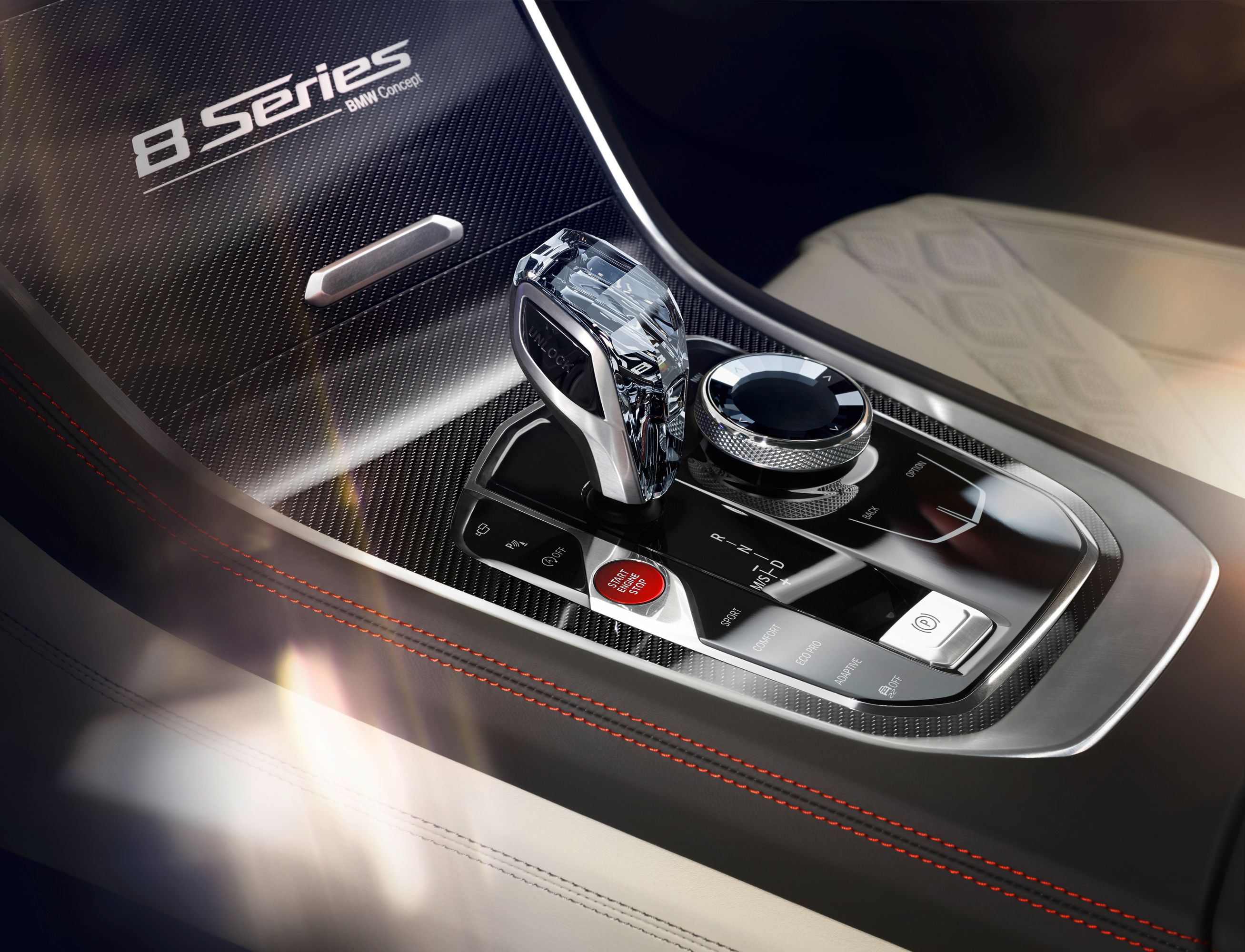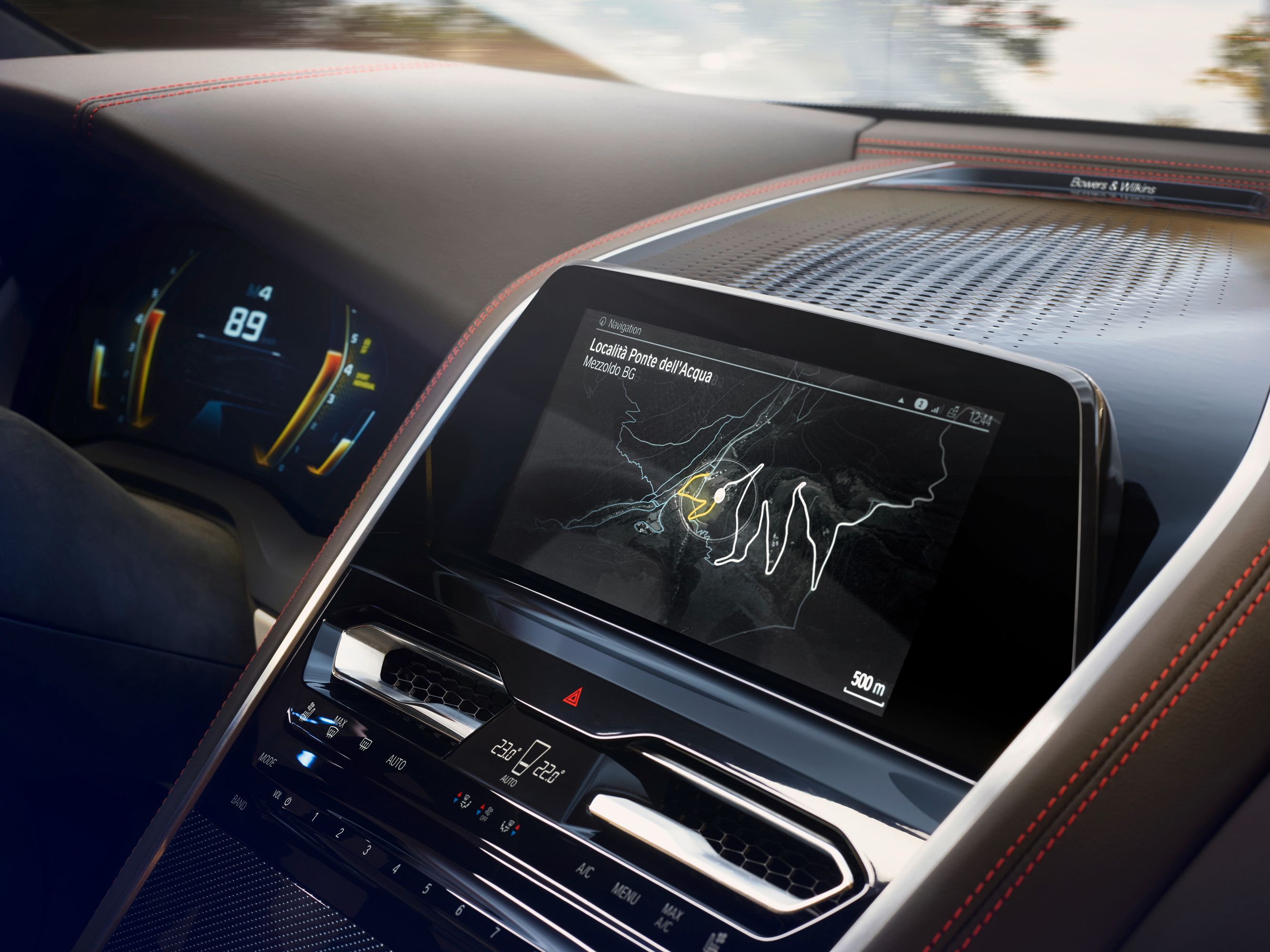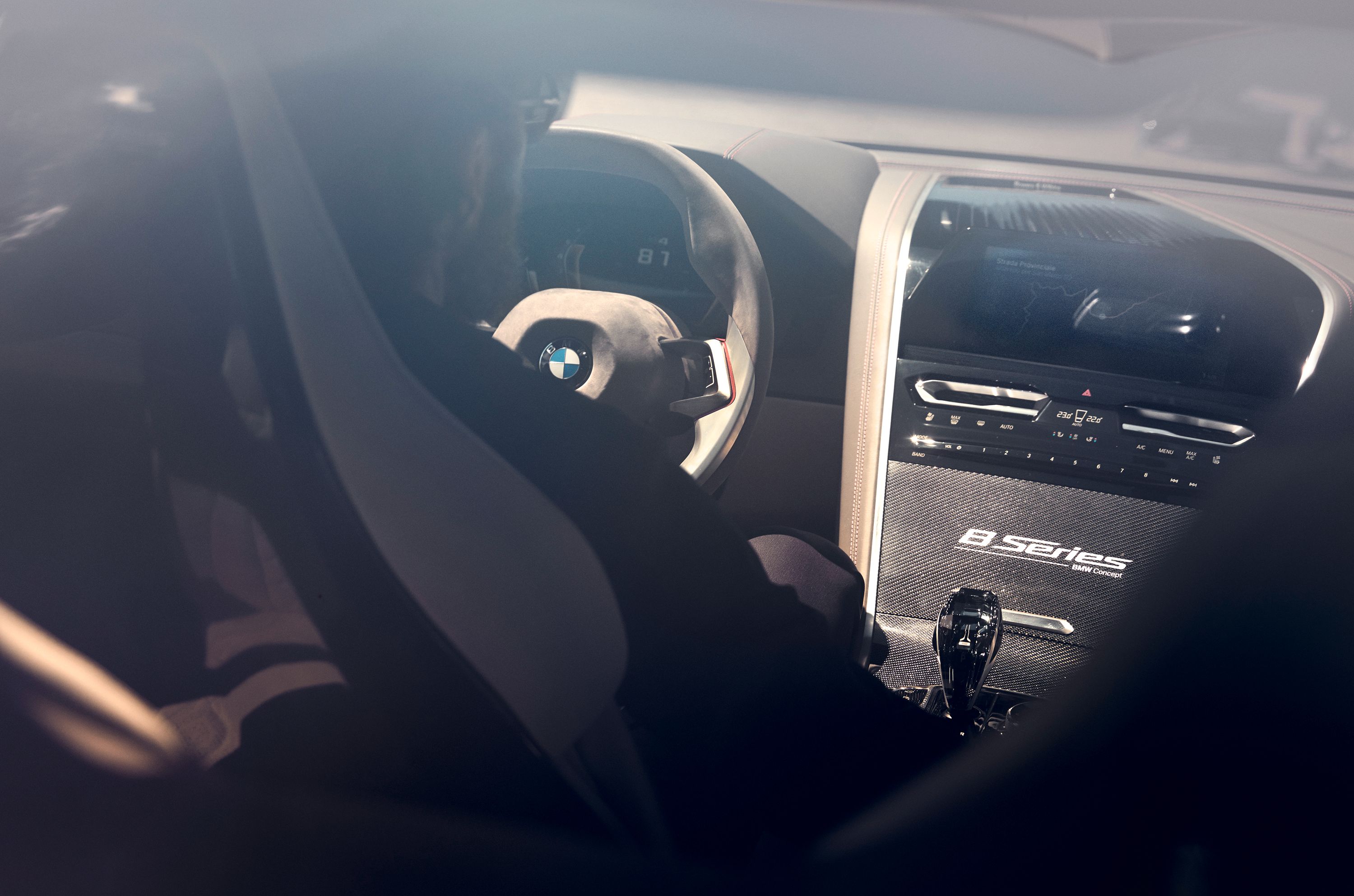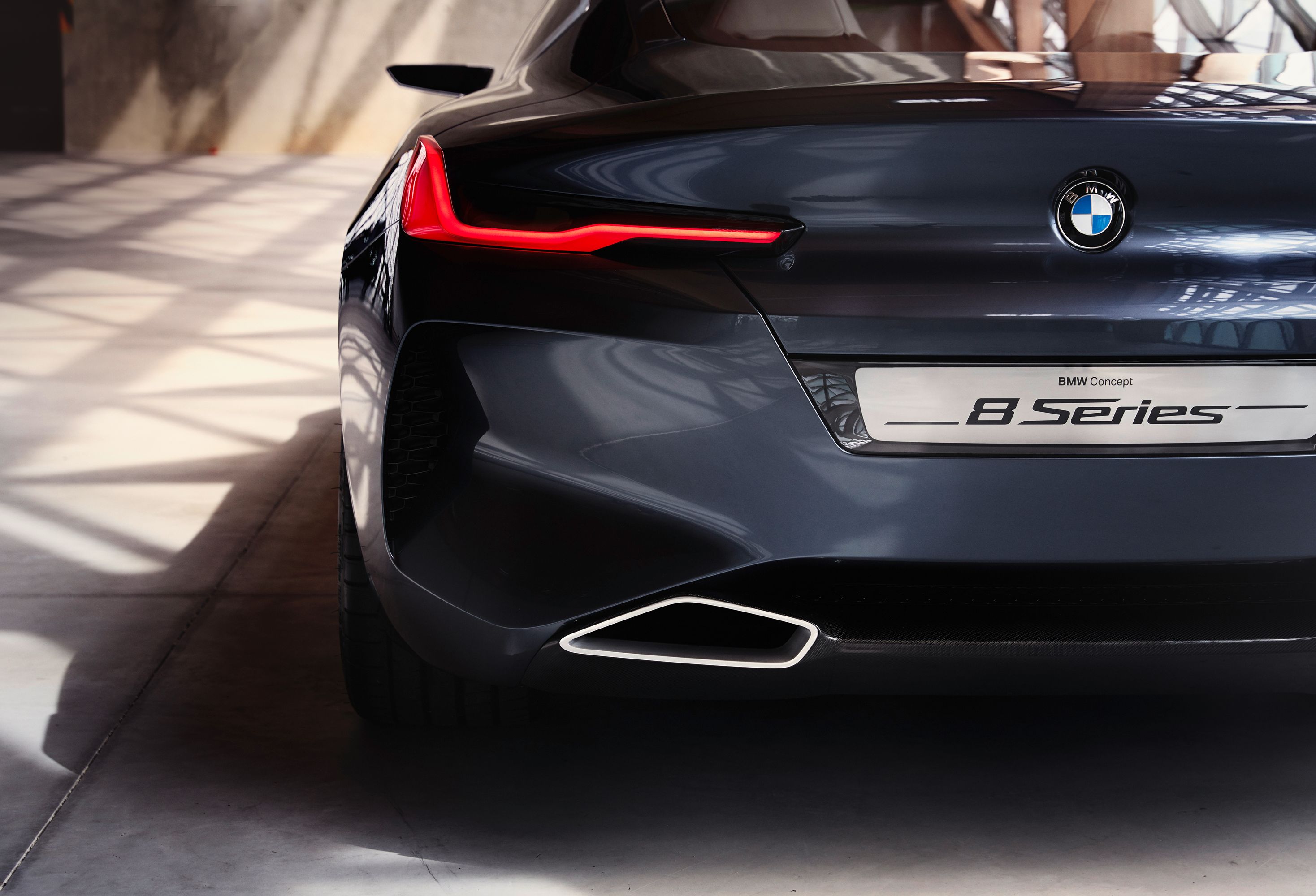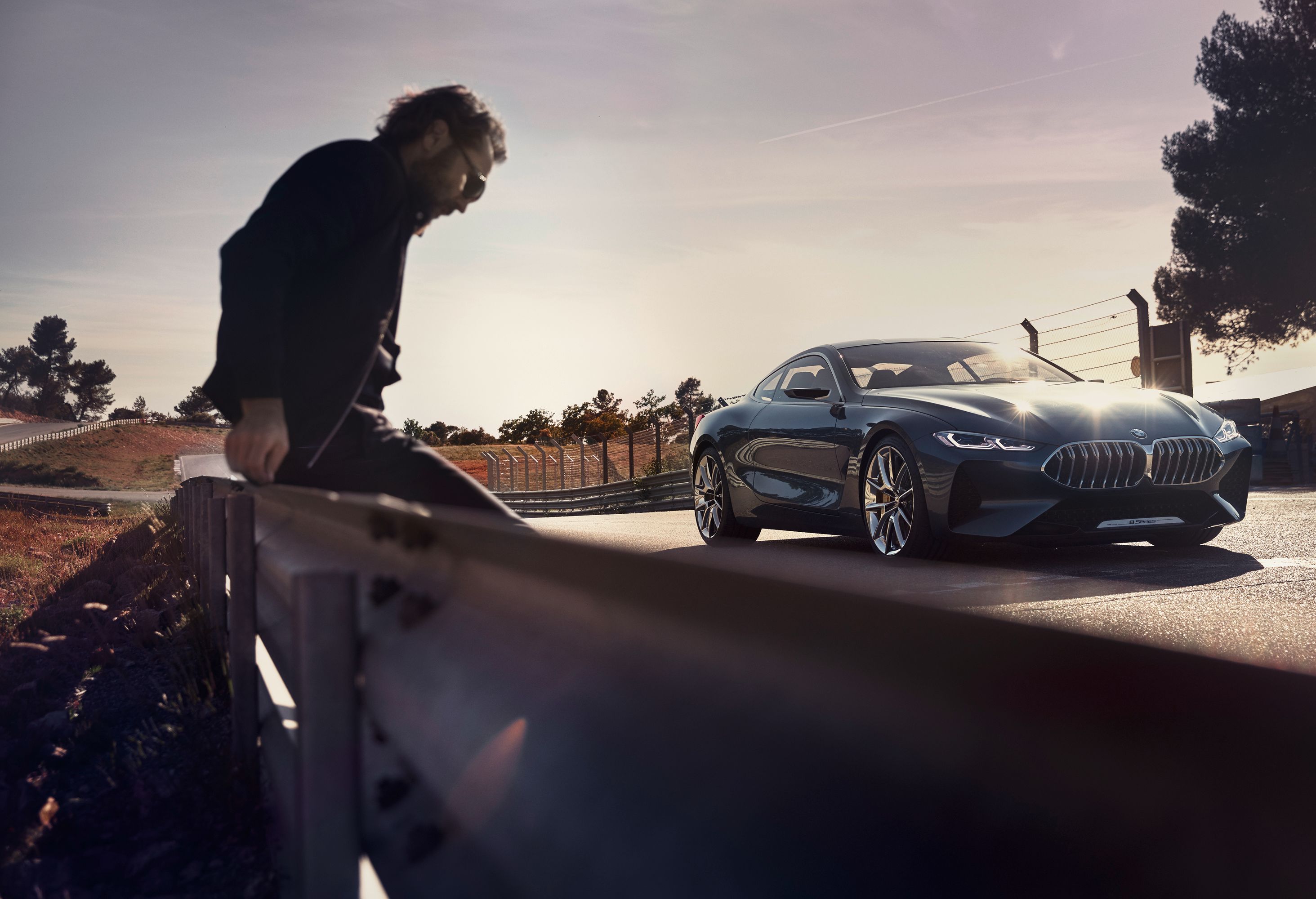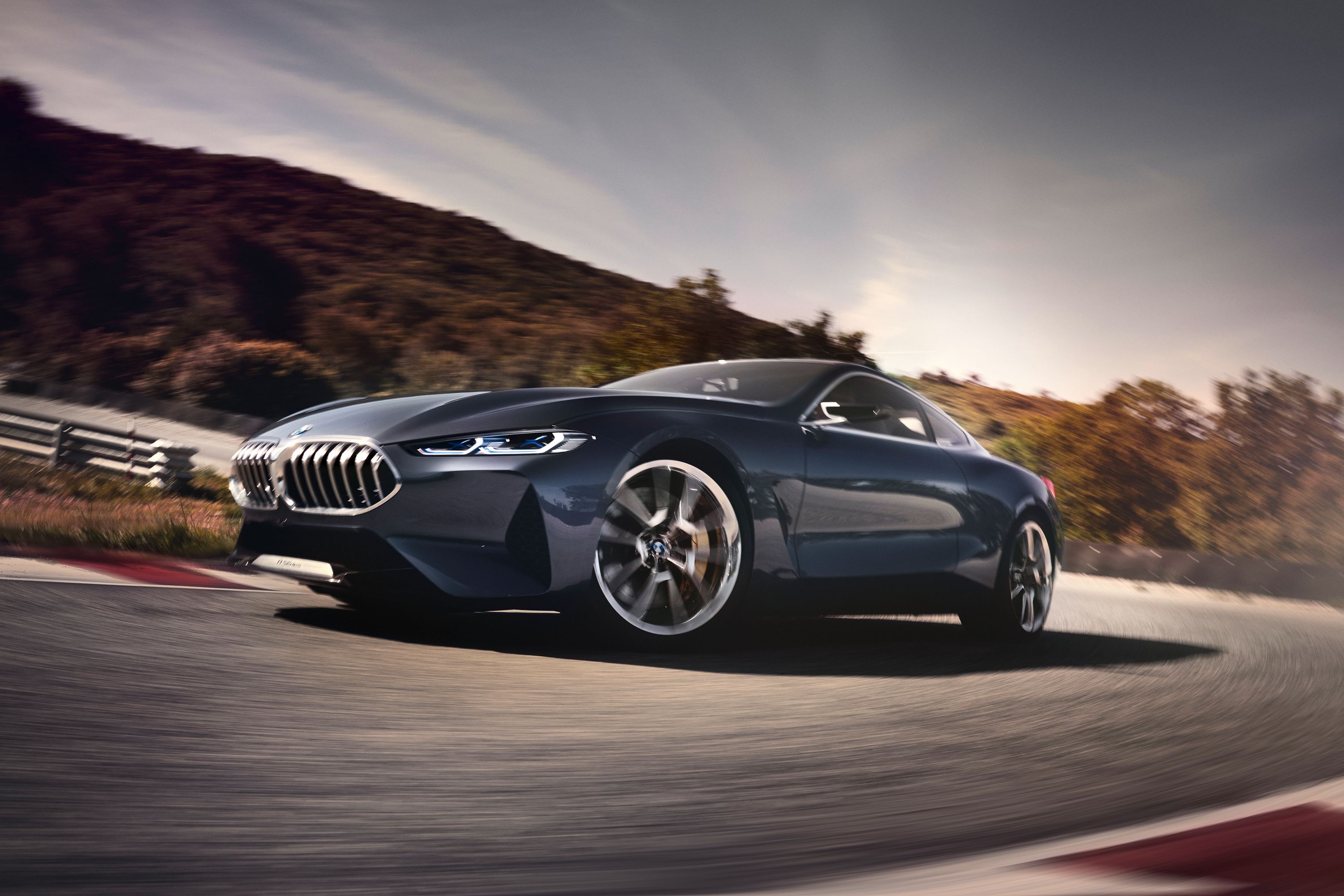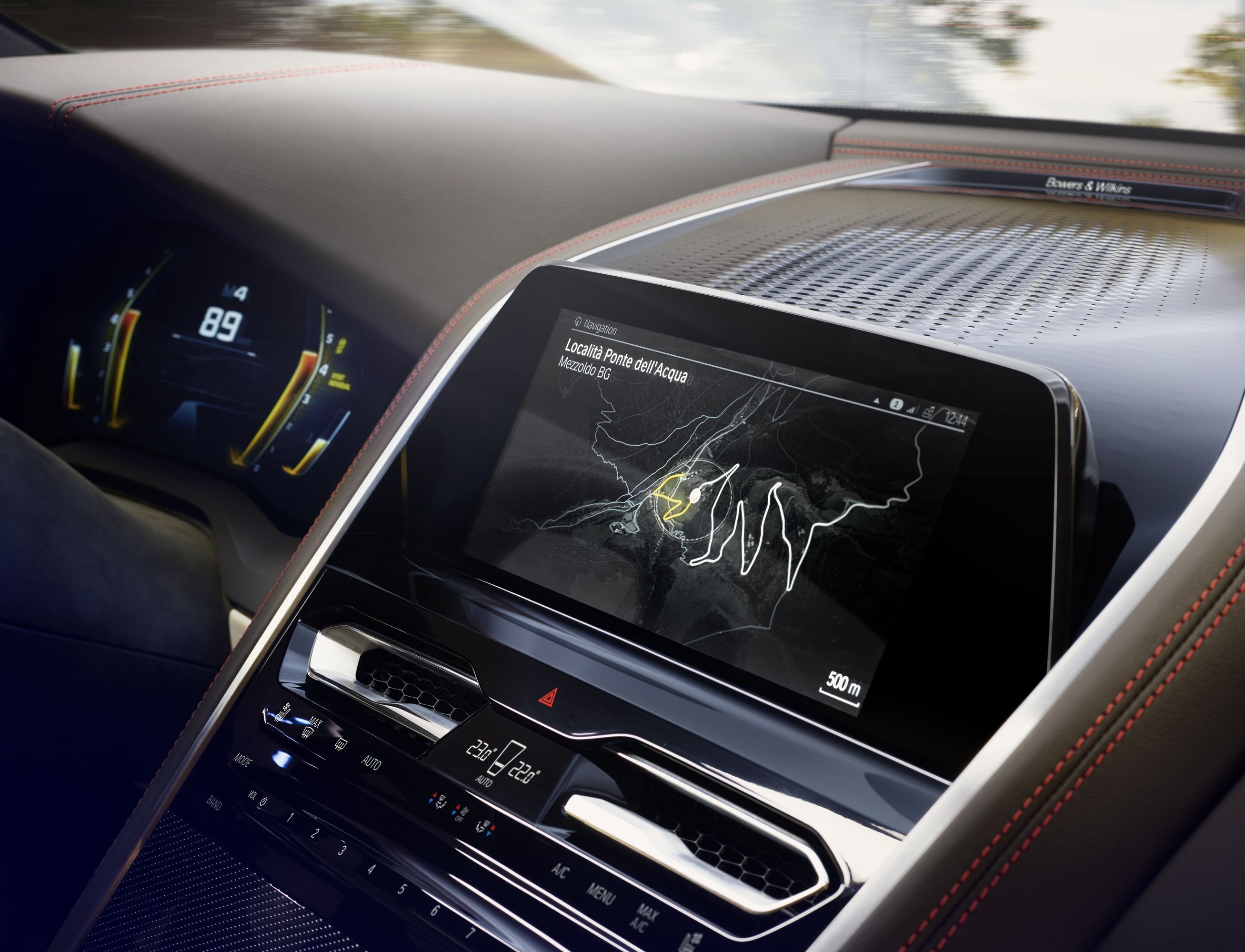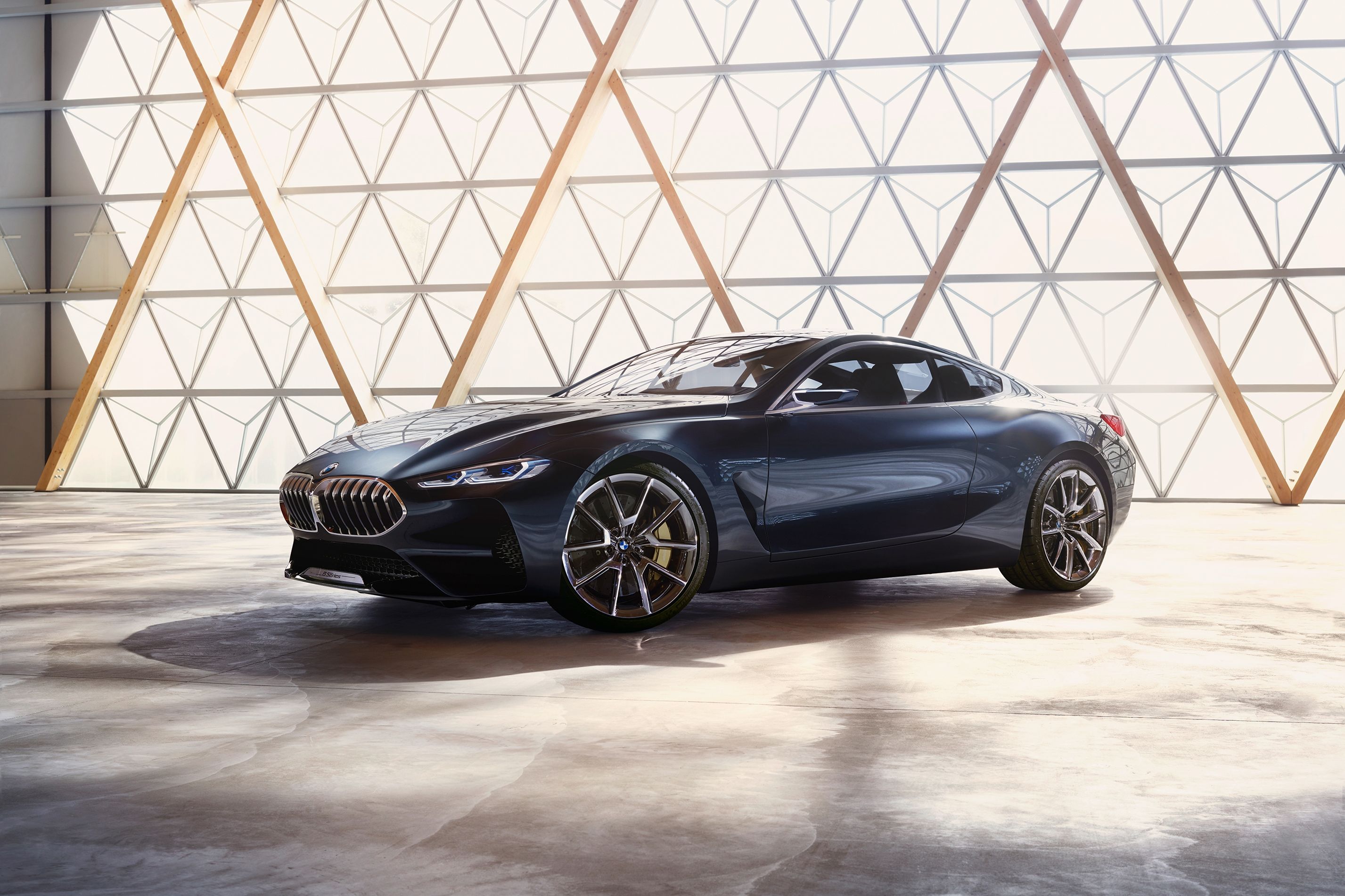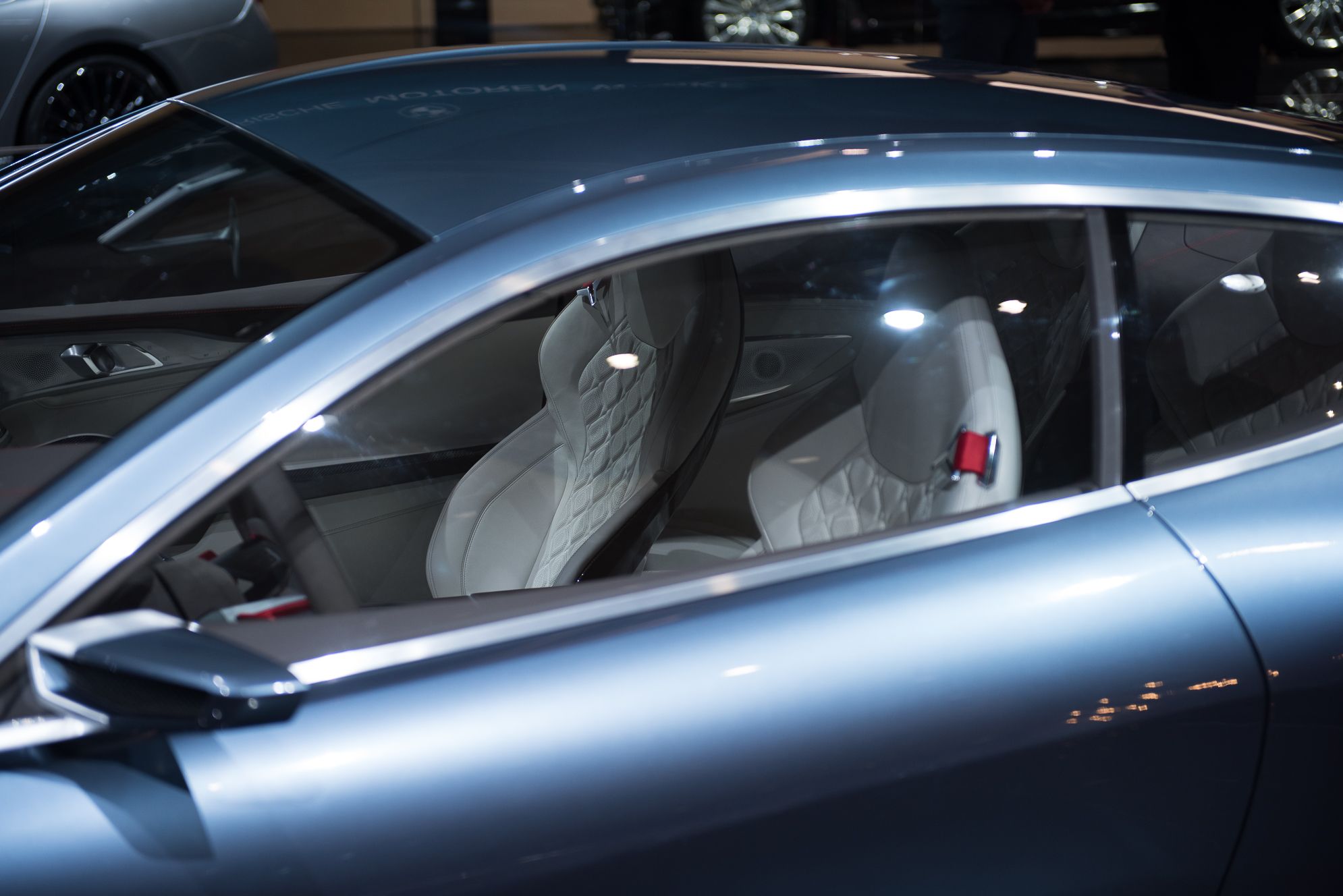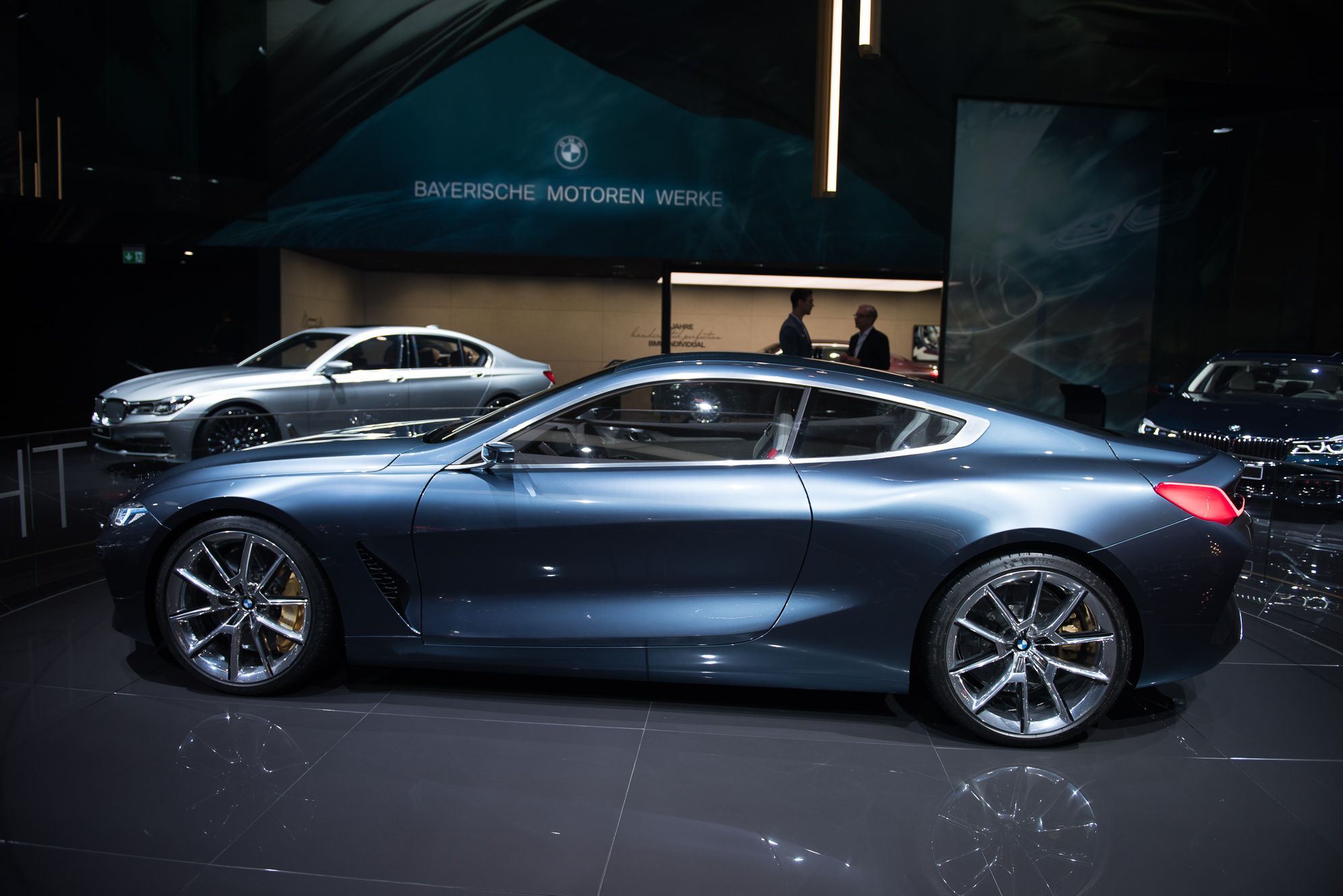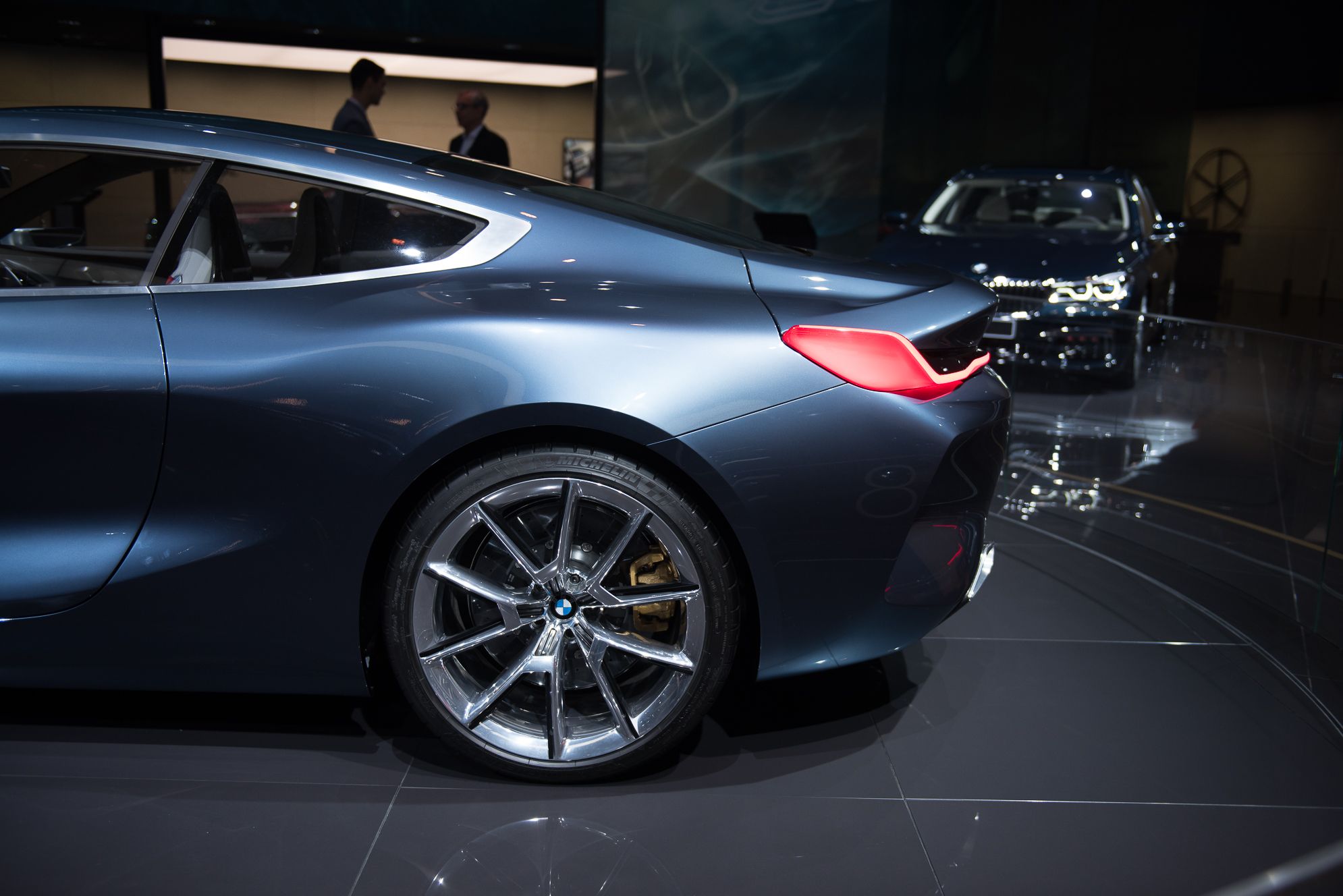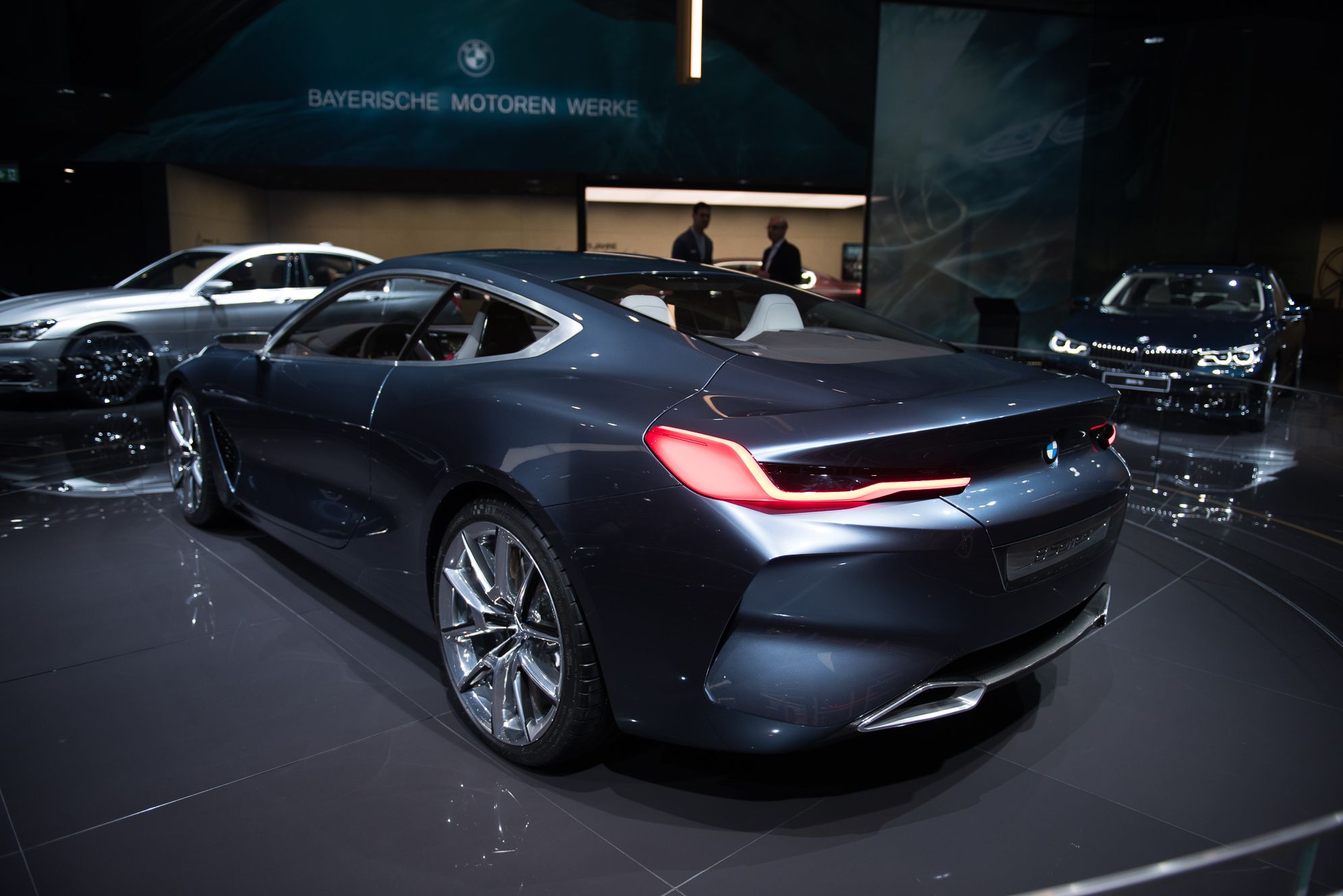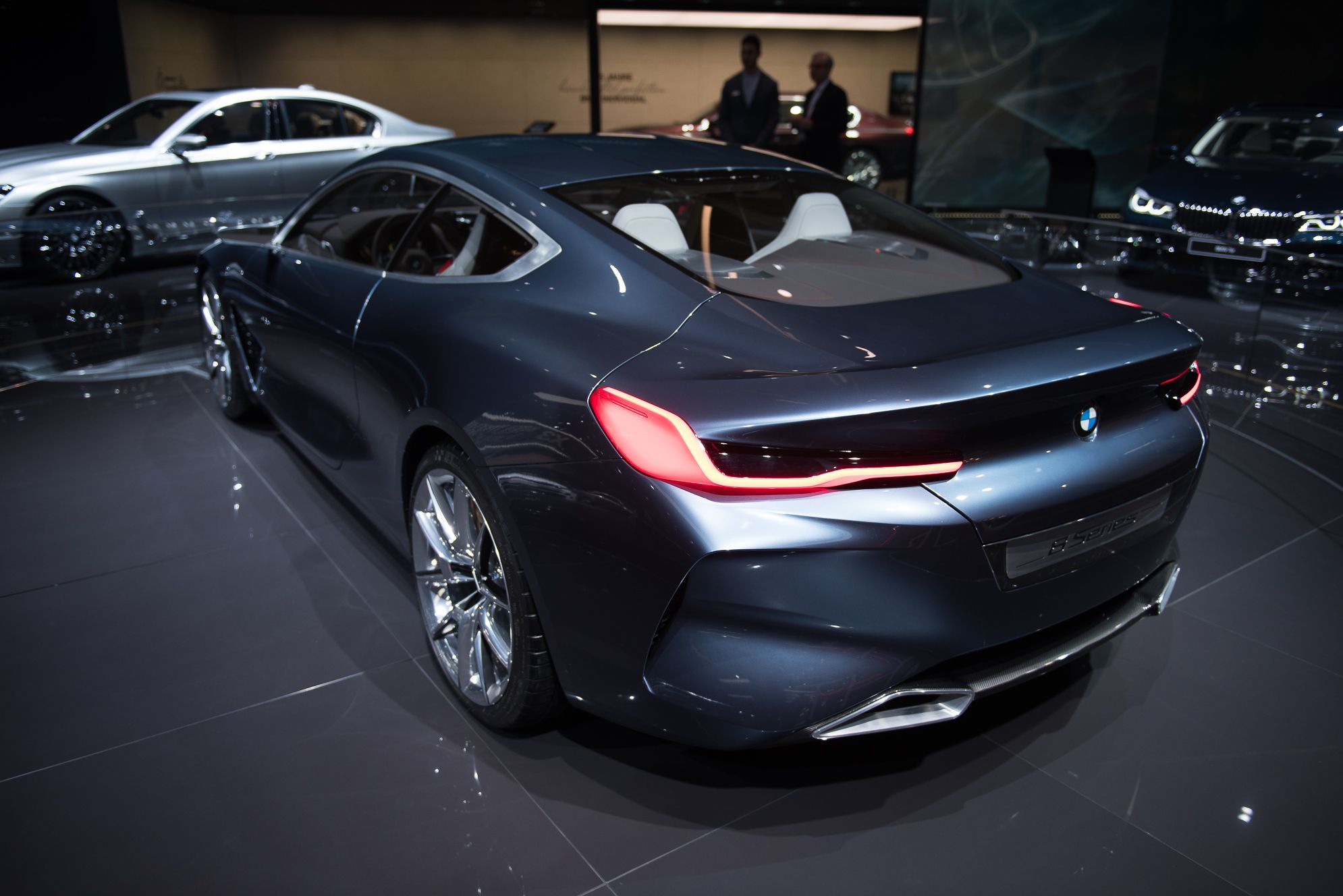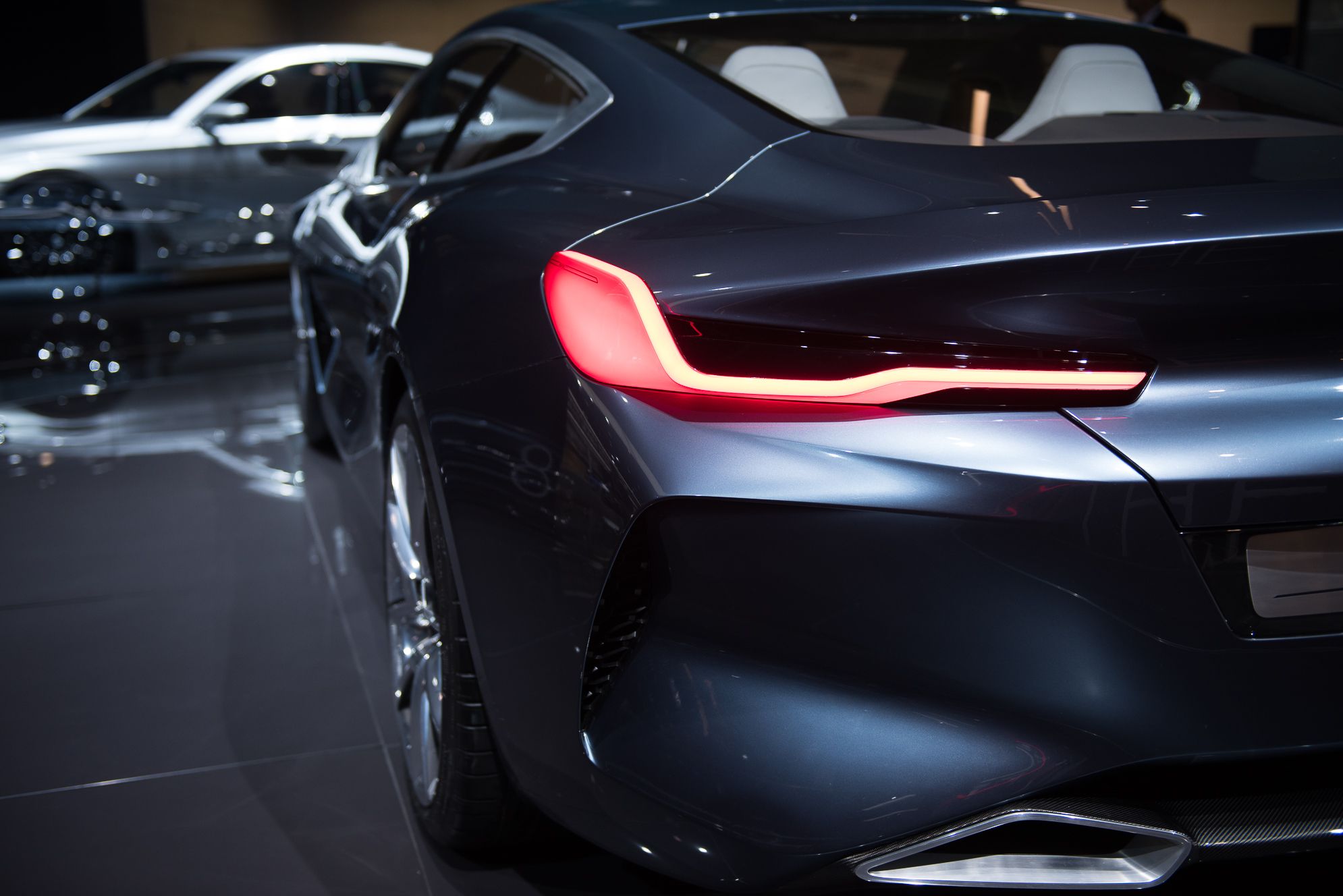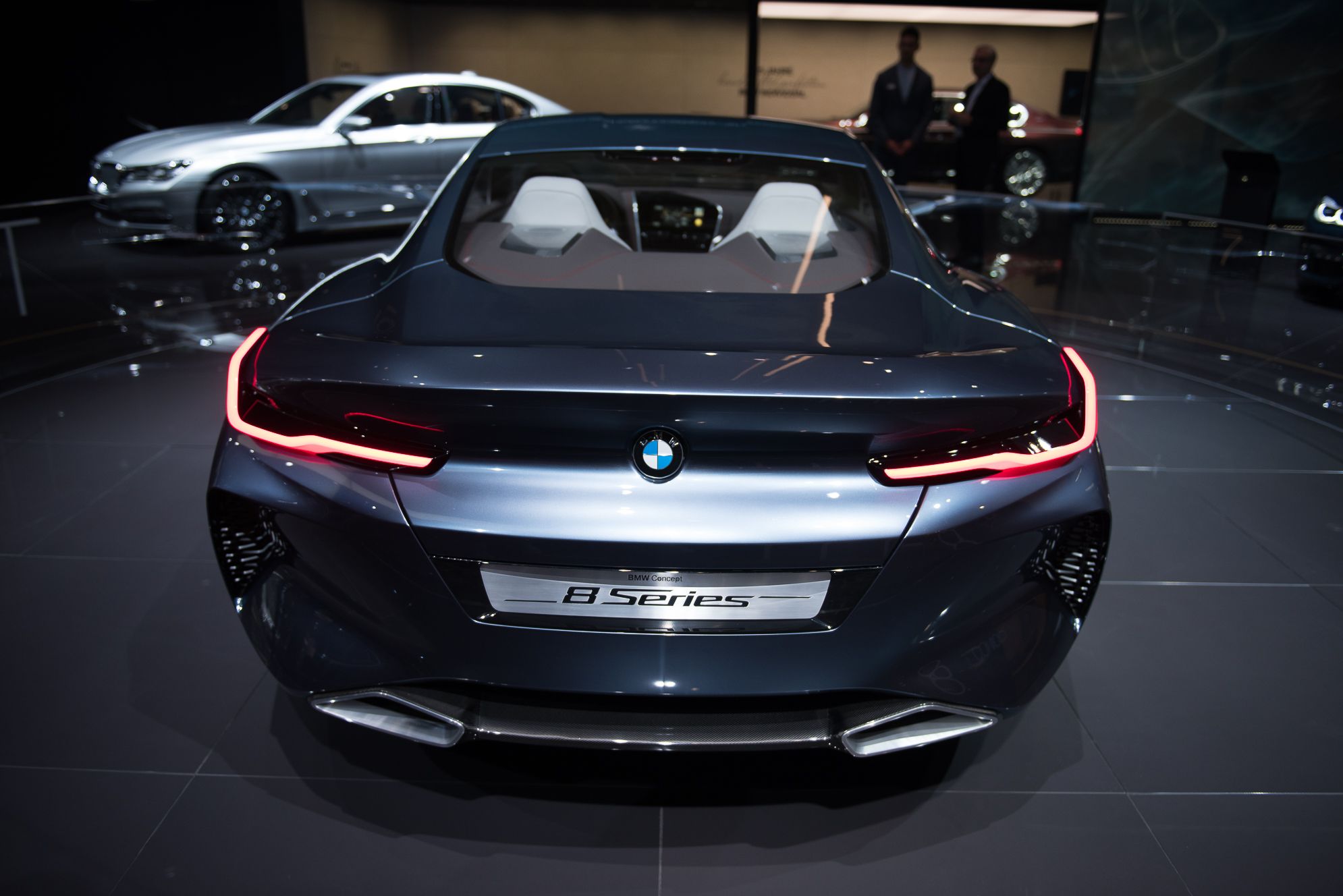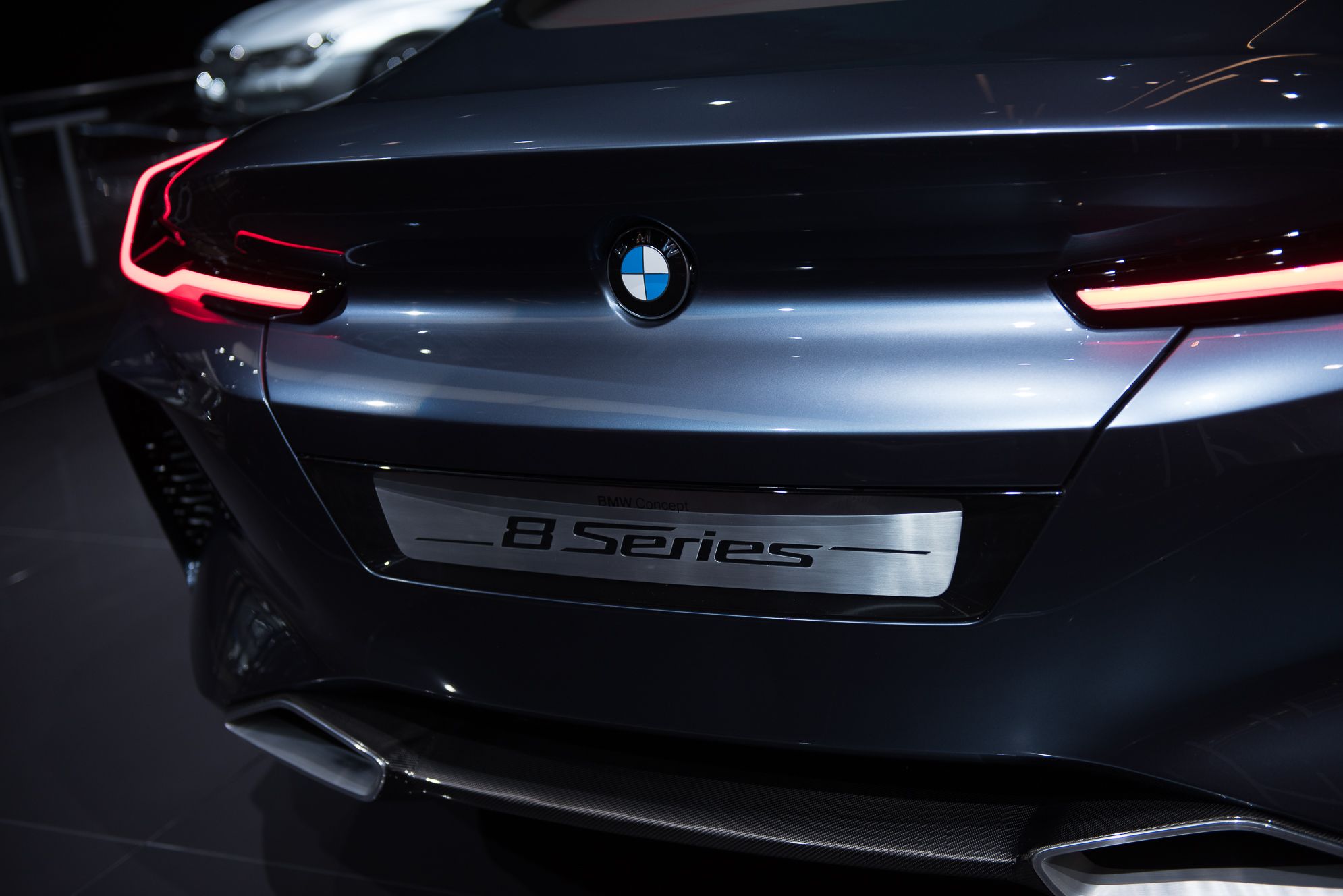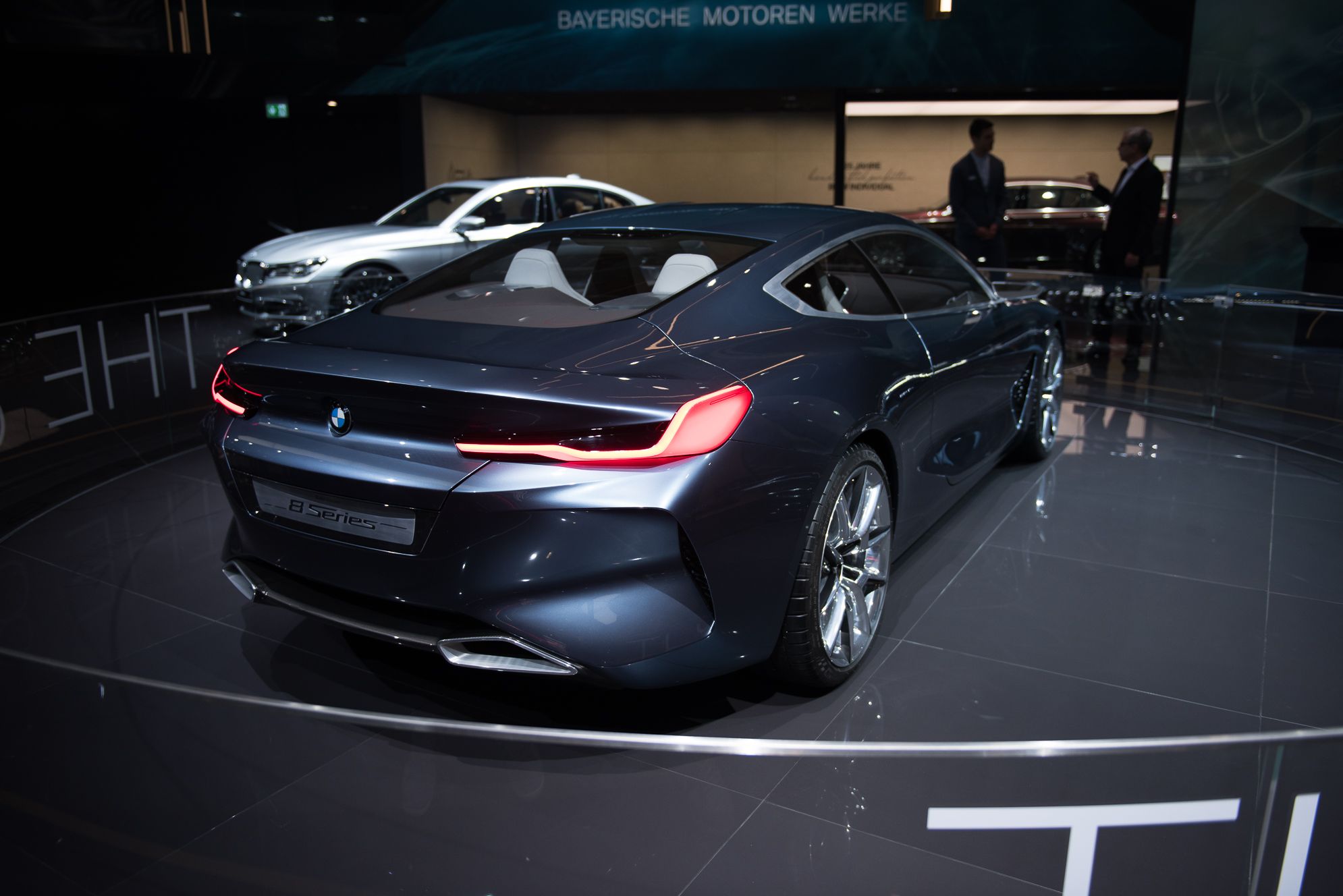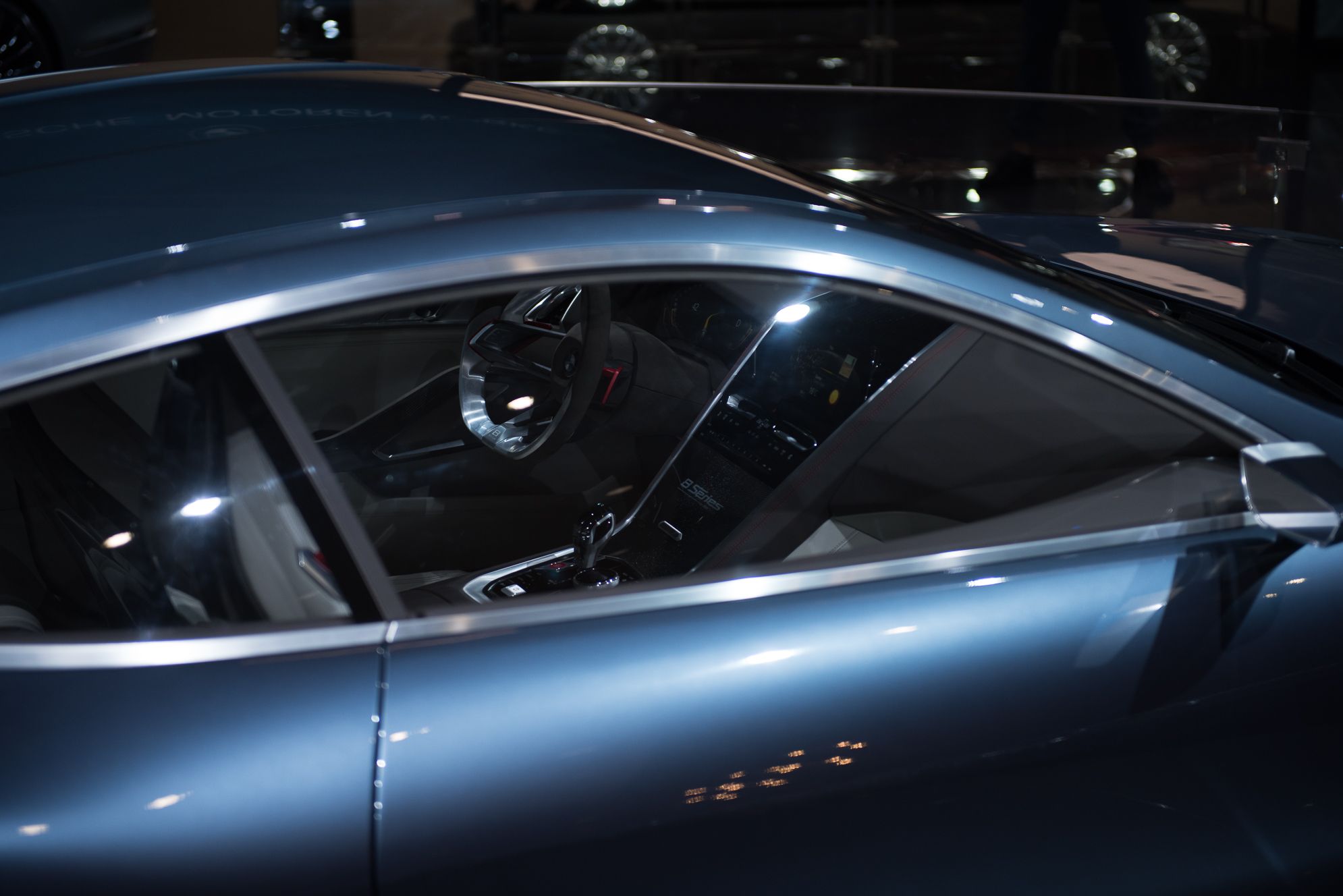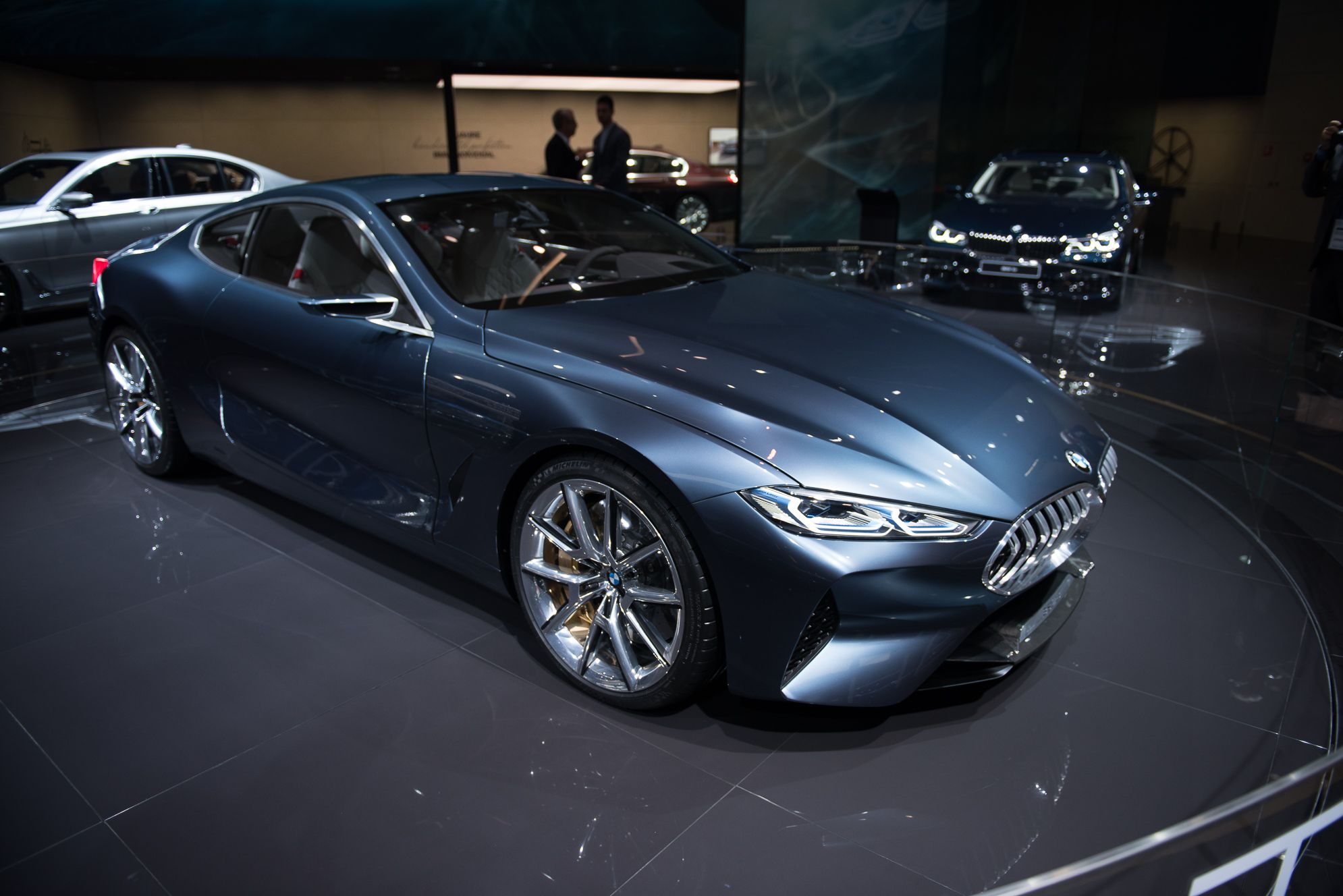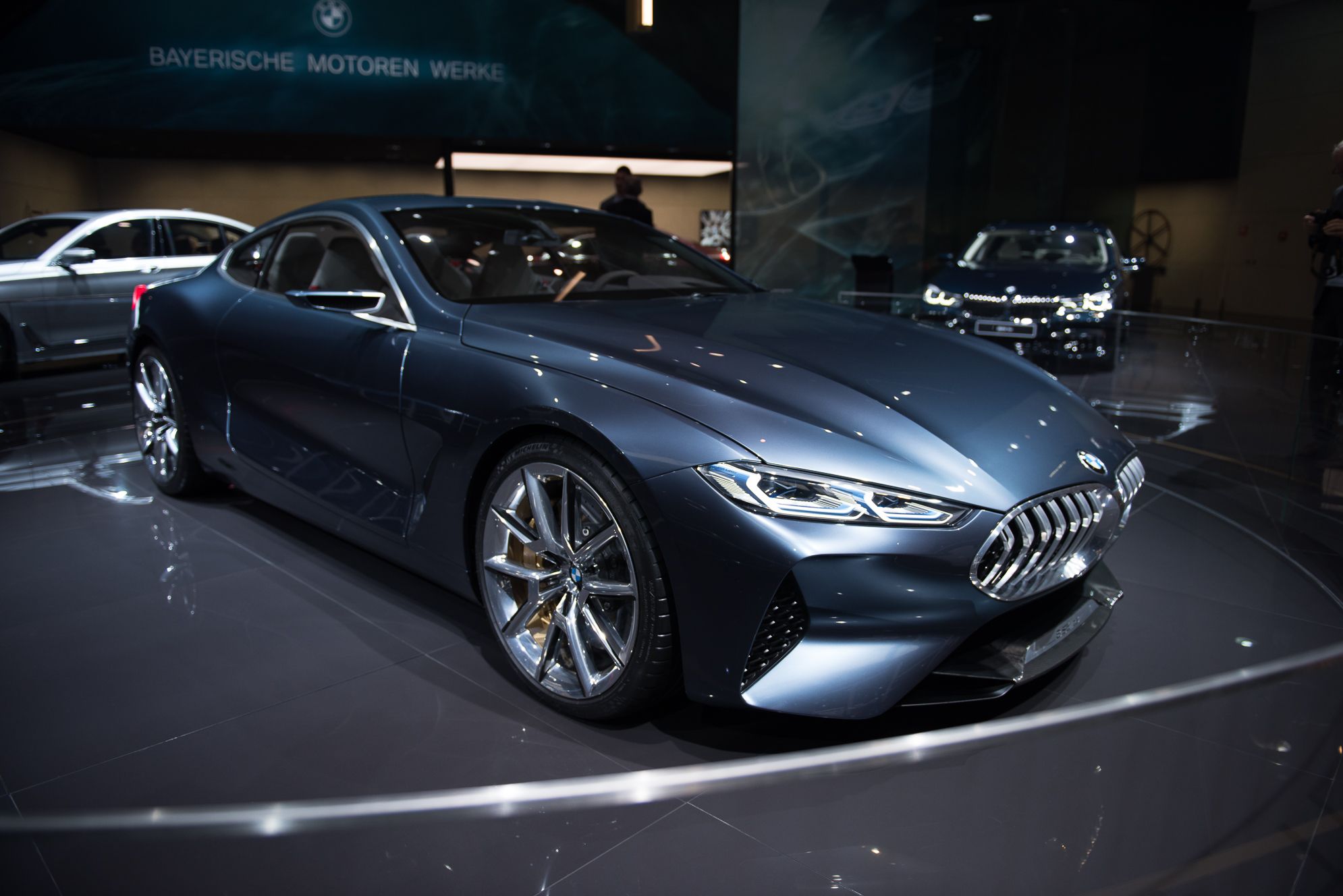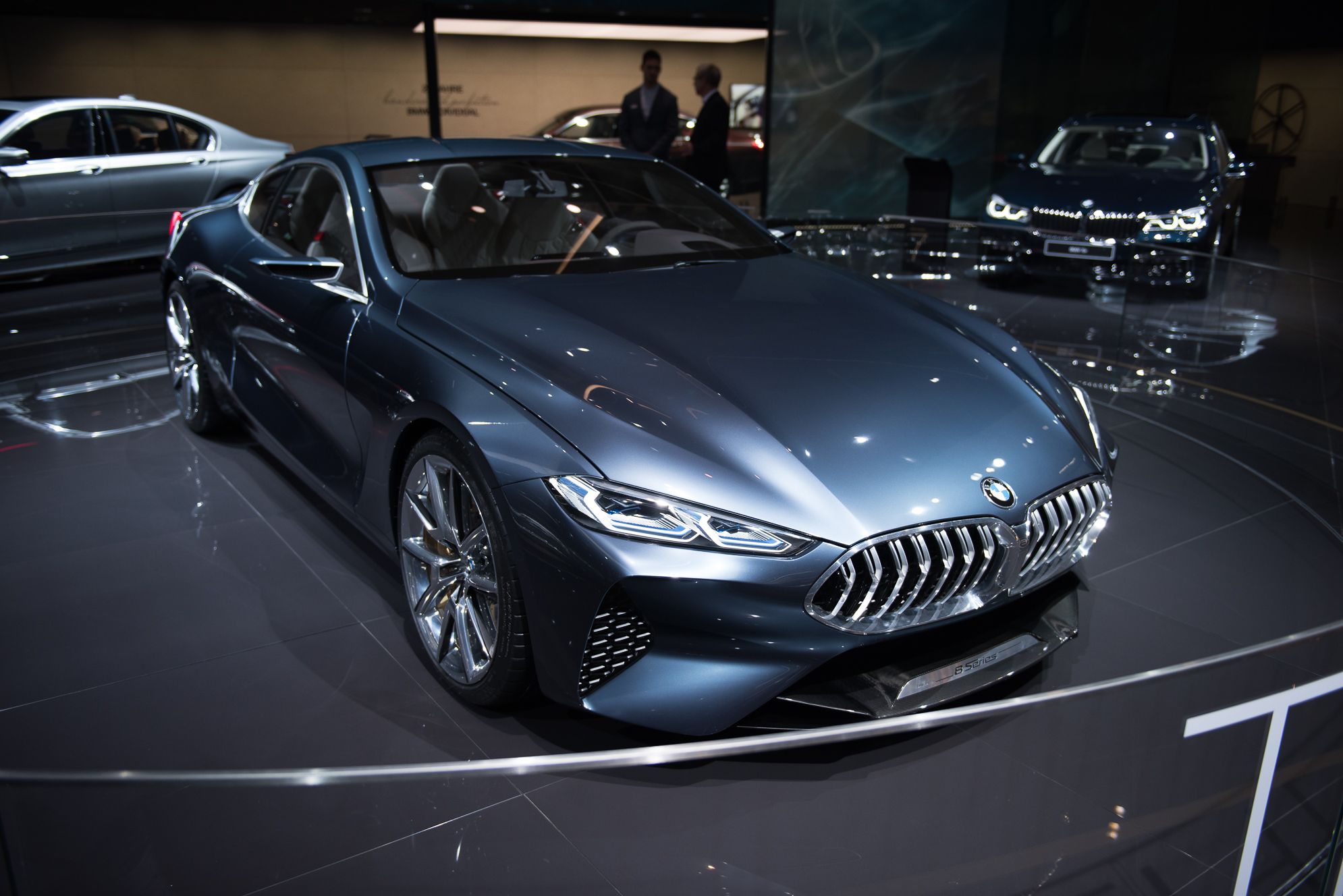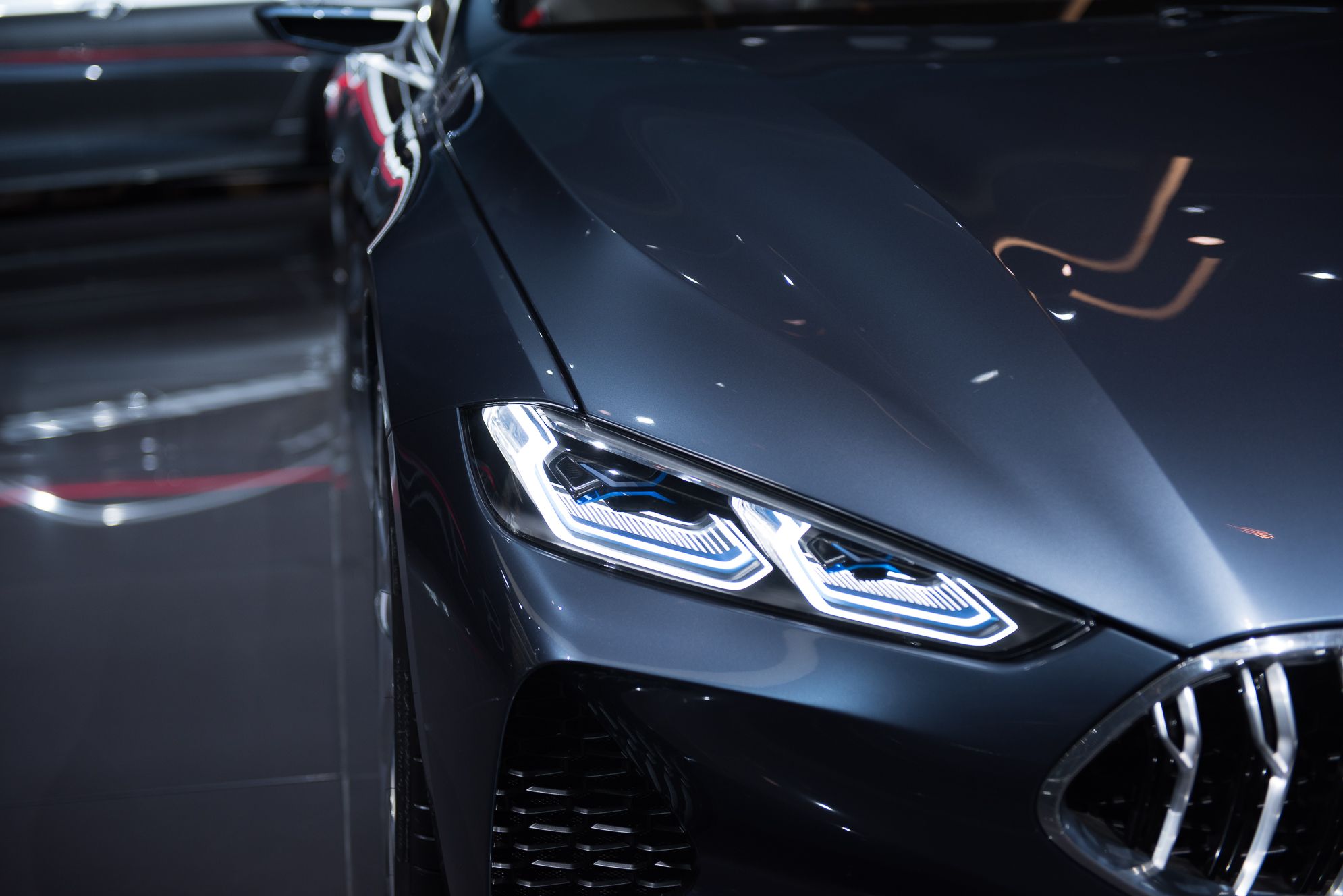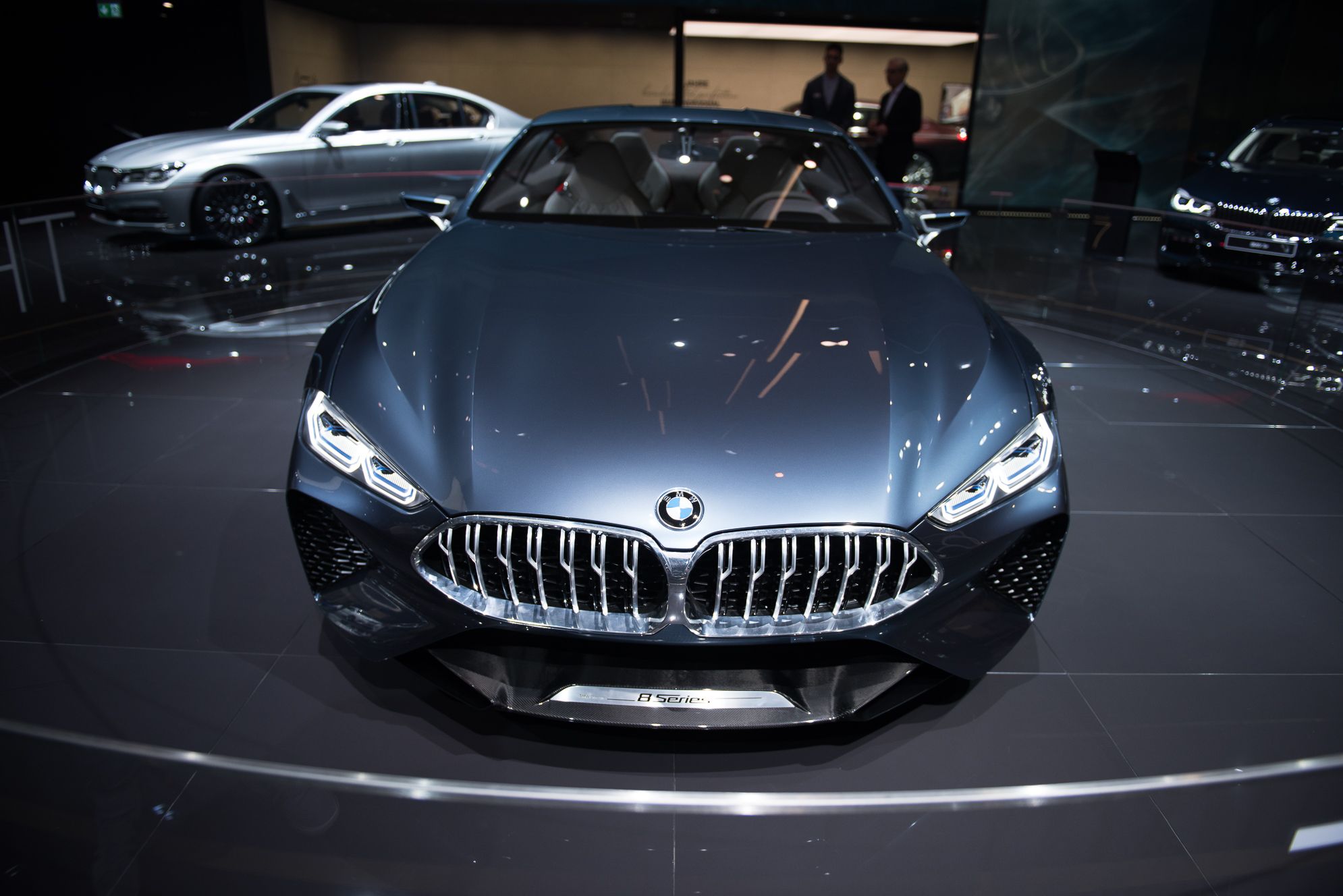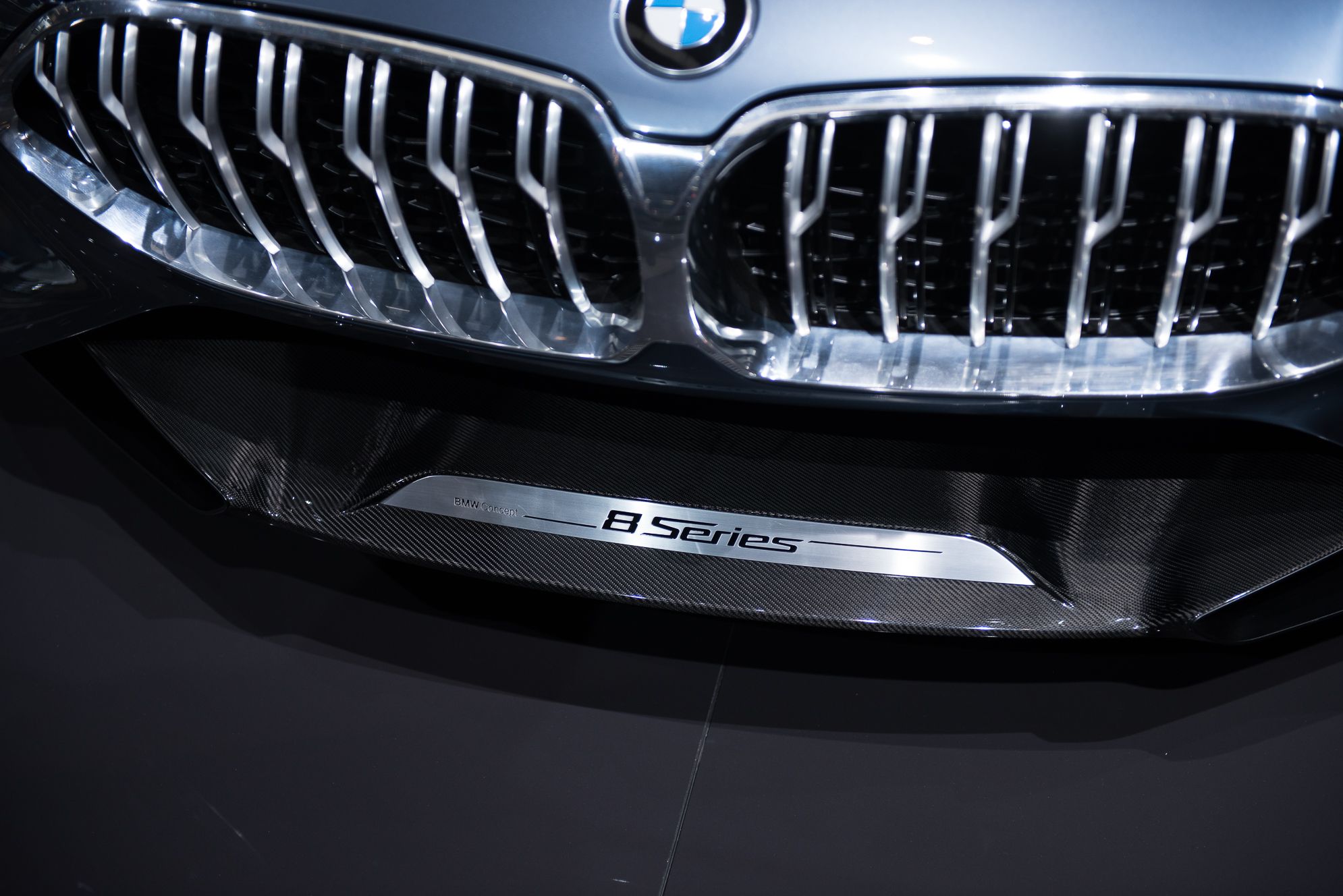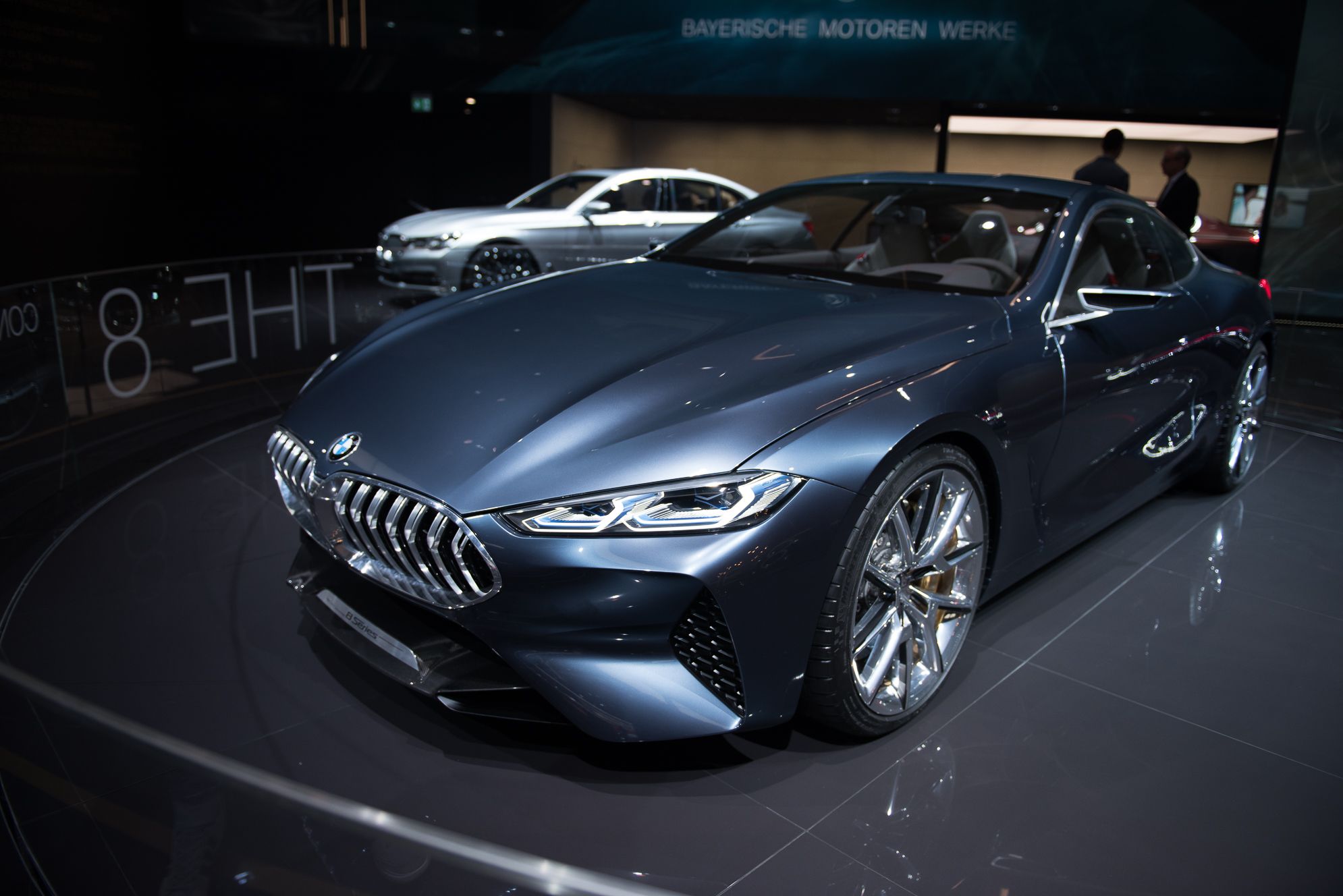Back in the late 1980s when BMW introduced the first 8 Series Coupe, it threw the lineup into turmoil as the 6 Series quickly lost relevance. The 6 Series was eventually discontinued a few years after the 8 Series rolled into showrooms. The 8 Series quickly became an icon, but was ultimately short-lived, being discontinued just 10 years after its introduction. The 6 Series bounced back in 2003 and has been on the market ever since. Fast forward to 2017, and we’re looking at another 8 Series Coupe. This specific model is a concept, but promises to be near-production ready and represents what the new 8 Series will look like when it hits the market in 2018 as a 2019 model. Little is known as far as specifics go, but the 8 Series concept shows off a bold new styling language for future BMW products and essentially redefines the line between beauty and luxury. Inside, the concept represents the evolution of BMW’s iconic styling while the motivation under the hood is likely the same 4.4-liter, turbocharged, V-8 from the current 7 Series.
The new 8 Series Coupe coming and there’s no denying it at this point. It’s quite likely to throw BMW’s lineup into chaos once again. Is there a place for the 6 Series with a new 8 Series on the market? Does the design language of the new 8 Series fit into the ego of BMW fanboys enough to encourage paying much more for a slightly larger coupe? These are two important questions, but they all lead to the same quandary: Will the production model based on this concept perform well enough for the name to gain that iconic status it was once known for, while earning itself a permanent place in Bimmer’s stable? Well, let’s dive on into this concept and see just what the future might hold.
2017 BMW 8 Series Concept
- Make: Array
- Model: 2017 BMW 8 Series Concept
- [do not use] Vehicle Model: Array
BMW’s Concept vs Our Rendering
When you compare the concept (left) to our rendering (right,) it’s clear that we had the right idea, but we didn’t get aggressive enough with the styling. The roof of the concept has more of a downward slope while the hood is also more bubbly but shares the same defining characteristics otherwise. With a lower roof, the glass on the concept is quite a bit shorter, but we did nail the general design cues of the window trim and glass layout. The rear quarters are flatter and more extended above the wheels while the taillights stick out a bit more. Down below, the Concept takes a drastically aggressive turn with a big fender vent and massive body line that ties the fenders and rear quarters together. Up front, BMW gave the grilles much sharper angles than we anticipated while the fascia gets a large air dam and big corner vents.
BMW’s Concept vs First-Gen 8 Series
Looking at the two images above, it’s easy to tell that things were way different back in the 1990s. Car design was generally boring and lackluster compared to what we’re used to now. And, while the original 8 Series (right) was a little bland in comparison to today’s cars, it was beautiful for its time. It had the flip-up headlights, clear running lights, and charismatic body lines that told the world “I’m in charge.” In comparison to the new concept, the difference is night and day. The original 8 Series had those tiny, square grilles, a thin fascia, detailed side skirts, and thanks to that flat deck and plateaued rear quarters, an extremely low drag coefficient of 0.29 – a figure that put the BMW 635i and M6 to shame at the time (it beat it out by .10). This was part of the reason why the 6 Series was phased out while the original 8 series was still an infant on the market, but that’s only part of the reason. The original 8 Series was also the first vehicle to feature a CAN bus wiring system (eventually became an industry standard,) it featured throttle-by-wire for better throttle response and was once of the first car’s produced by BMW to use a multi-link rear axle. And, even more importantly, it was the first road car to be offered with a V-12 engine and six-speed manual gearbox!
Unfortunately, the 8 Series was also expensive with a starting price around $70,000, which would be closer to $130,000 in today’s money. Ultimately, BMW sold just over 31,000 examples throughout 10 years of production. That wasn’t much and it ultimately lead to the car being axed from the lineup. An official M8 was never introduced either, which seems like a major foul on BMW’s part, but the 90s were a troubling time of recession, war, and high energy prices. Be that as it may, the 8 Series still garnered the icon status it deserved, and that’s why we’re looking at a die-hard preview of its successor today in hopes that it will pick up where the original left off. Now that BMW has confirmed it, we'll finally get to see that M8 we’ve been waiting almost 30 years for.
Exterior
Now that we’ve seen it in all of its glory, the 8 Series Concept has been met with some mixed emotions. That’s not to say it’s not a gorgeous car because it is, but it’s not exactly what some expected. First off, it’s finished in an exclusive color known as Barcelona Grey Liquid, which gives the car an iridescent appearance. Up front, it gets a pair of large, new-age kidney grilles that feature excessively sharp angles for a dominating look. The large air dam and corner vents round out the nose of the car, while the thin, sleek headlights give the car just enough sex appeal to make models like the Mercedes S-Class Coupe and Aston Martin Vanquish jealous. The hood is long and swoops downward at the nose while those sharp body lines give it a snarling appearance.
Moving over to the side profile, there’s a bit of a bubbly appearance around the wheel arches that are complemented by flat outlines. The body line on the fender blends seamlessly into the waistline while the middle body line has a wavy look at the rear quarter where it feeds into the haunches. A large vent in the front fender serves as the basis for the lowermost body line that runs along the bottom of the door and feeds into the lower front corner of the rear wheel wells. The low roofline provides for sleek side glass which is accented by chrome trim and thin side mirrors (finally, a concept that doesn’t have side cameras, huh?) Like the original 8 series, the rear quarters also have a bit of a plateau ahead of the waistline which not only ties the car to its roots but also provides for optimal aerodynamics. 21-inch wheels round out the side profile and fit the body styling just right with a dual, five-spoke layout.
Around back is where things get even more interesting. That sloping roofline continues with the rear glass, which ultimately leads smoothly into the rear deck. The body and deck come together in the rear to create a lip spoiler of sorts that is flanked by wing-like, one-piece LED taillights. The shape of the taillights make them look like enlarged versions of the LED strips in the headlights and provide for the best 3D taillights seen on a vehicle so far. Finally, the fascia does a good job at blending smooth elegance with aggressive styling thanks to those concave corners that lead into tall vents. There’s an air dam-like vent between the trapezoidal exhaust outlets that sit just inside the lower corners of the fascia.
If the production car does end up looking as well as this concept, we’ll see an official model from BMW that blends muscle, luxury, and modern aggressiveness all into one package. Even with a high price tag, it’s sure to be a hit.
Interior
The inside of the new 8 Series Concept is something that might be a bit unexpected if you’ve been following BMW in recent years. There’s no denying that the brand has a habit of repurposing interior design and technology among its lineup, but if this concept really is a representation of the production model we’ll see next year, that model will definitely stand out in the crowd. And, truth be told, it even makes the unique interior of the BMW i8 a bit obsolete in terms of style and execution. Where most BMW models have a center console that’s completely separate from the dash, the 8 Series Concept is all linked together with the center stack extending away from the dash and layering over the base of the center console. The tunnel of the 8 Series makes for a high-sitting console which is both styling and refreshing for a BMW. The dash itself is fairly smooth with just one sharp design cue that is executed with red contrast stitching that links the rearmost portion of the dash to the face. A gentle overhand casts a shadow over the fully digital instrument cluster which is accented by Alcantara on the steering column and flat-bottom steering wheel.
The steering wheel in question in a three-spoke unit with a deep-sitting hub and silver insert on the bottom half, linking all three spokes together. The same silver trim can be found on the top of the door trim panels and around the triangular-ish corner HVAC vents in the dash. The dark brown color of the dash and red contrast stitching carries over to the top of the center console and the very top of the door time panels, but below that, a two-tone appearance comes into play with the bottom of the dash, tunnel, door trim panels, and all of the seats being finished in a Fjord White. Black carpets and a black roof liner set things apart a bit more, while the seats have a unique layout with a quilted and perforated center and a bit of extra padding in all of the right places to really make the seats hug your body when you’ve planted your posterior in them. Finally, subtle hints of polished carbon fiber on the doors and center console and red seatbelts tie the interior together. Not bad!
Drivetrain
At this point, drivetrain information is as big a mystery as what’s on the dark side of the moon, but thanks to a walkaround video done by Auto Bild, we know what the concept sounds like:
(skip to 4:52 to hear the engine fire up)
Based on the sound, it’s certainly not a V-12, but it is likely to be the 4.4-liter V-8 found in the 7 Series. In that form, the engine produces 445 horsepower at 5,500 rpm and 480 pound-feet at 1,800 rpm. It’s enough to get the 7 Series to 60 mph in 4.3 seconds and up to an electronically governed speed of 155 mph. When it comes to a production version of the 8 Series, we’re expecting that 4.4-liter to be revised to produce a little more power and torque, while the entry-level model will likely get the 3.0-liter, inline-six found in the lesser variants of the 7 Series. In the 7 Series that engine produces 320 ponies and 330 pound-feet, so the 8 Series may see a bump to as much as 330 ponies and 340 pound-feet. Shifting duties will likely be handled by an updated version of BMW’s current eight-speed automatic with sport and manual shift modes.
But, there’s also a wildcard in the mix. See, the 7 Series is still available with a V-12 in M760 form, so the production version could, potentially, see that engine offered as well. Hopefully, that will be available in the official M model. Either way, that model will have somewhere around 600 ponies on tap and would be able to take on the Mercedes-AMG S63 and S65 models much better than anything with an inline-six or V-8.
|
840i |
850i xDrive |
|
|
Config/No of cyls/valves |
in line/6/4 |
V90/8/4 |
|
Fuel management |
DME 8.6 |
DME 8.8 |
|
Engine Technology |
BMW TwinPower Turbo |
BMW TwinPower Turbo |
|
Turbo Type |
Twinscroll |
Twinscroll |
|
Stroke mm |
94.6 |
88.3 |
|
Bore mm |
82 |
89 |
|
Displacement cm³ |
2998 |
4395 |
|
Compression rate :1 |
11 |
10.5 |
|
Engine power |
320 HP @ 5,200-6,500 RPM |
445 HP @ 5,500-6,000 RPM |
|
Engine torque |
330 LB-FT @ 1,380 RPM |
480 LB-FT @ 1,800-4,500 RPM |
|
Top speed |
130 MPH |
130 MPH |
|
Top speed opt (mph) |
155 MPH |
155 MPH |
|
0-60 mph |
5.4 seconds |
4.3 seconds |
Note: BMW 7 Series Drivetrain Specifications listed here.
Conclusion
At the end of the day, this concept is absolutely beautiful, even if it isn’t exactly what some were expecting to see. With this concept and the upcoming production model, we’ve got a front-row seat to watch the evolution of a brand, starting with one of the most iconic names to ever come from the Bimmer stable. That grille, the sharp lines, the plateaued rear haunches, that roofline, and the entire interior is all fresh compared to everything in the brand’s lineup, and we know a lot of this design philosophy will carry over to the production model and eventually the smaller models in the lineup. But now, the trick is for all of you to start saving so you can buy an 8 Series so that we can finally see what an official M8 will really be like.
What remains, however, is the sheer uncertainty of what happens with the 6 Series. Right now, that model is literally up in the air. There’s no telling if there’s room in Bimmer’s lineup for two larger coupes, and the 6 Series could very well end up seeing the same fate it did last time BMW used the 8 Series name. For now, we’ll just have to wait and see. If we start seeing a bunch of 6 Series special editions in the next year, that will be a strong hint that the name will be retired once again. But, for now, what do you think of the concept? Let us know in the comments section below.

